Kuiper Belt
description: area of the Solar System beyond the planetary orbits comprising small bodies
41 results

How I Killed Pluto and Why It Had It Coming
by
Mike Brown
Published 7 Dec 2010
Many objects in the Kuiper belt thus have orbits that take them close to the orbit of Neptune but then much, much farther away from the sun. These objects have been called “scattered” Kuiper belt objects, as Neptune appears to have scattered them to those looping orbits. Only small things get scattered. The large planets are on nice circular orbits because there is nothing big enough to kick them around. The objects in the Kuiper belt—including Pluto—have tilted, elongated orbits because they are too small to resist the bullying of Neptune. Dutch could well have been a scattered Kuiper belt object rather than something on a circular orbit like a planet.
…
I was careful not to definitively declare the discovery as bigger than Pluto, but I did mention that if it had a dark surface—as we had long assumed most objects in the Kuiper belt did—it would have to be almost as big as Mercury. Over the next week, Chad, David, and I raced to see who could find old pictures of Santa to figure out what kind of orbit around the sun it had. Chad won and declared the orbit thoroughly normal. “Normal” in the case of the Kuiper belt means elliptical and tilted, but still within the swarm of all of the other Kuiper belt objects. After the oddness of Sedna, this normal orbit was almost a relief. At least something about the Kuiper belt was making sense. Today I know Santa by its official name, chosen by David: Haumea.
…
As I stared at the San Francisco Bay laid out in front of me, trying to pull my head back down to the earth by watching the boats blowing across the water, Jane Luu, a friend and researcher in the astronomy department who had an office across the rooftop courtyard, clunked up the metal stairs and looked out across the water in the same direction I was staring. Softly and conspiratorially she said, “Nobody knows it yet, but we just found the Kuiper belt.” I could tell that she knew she was onto something big, could sense her excitement, and I was flattered that here she was telling me this astounding information that no one else knew. “Wow,” I said. “What’s the Kuiper belt?” It’s funny today to think that I had no idea what she was talking about. Today if you sat next to me on an airplane and asked about the Kuiper belt, I might talk for hours about the region of space beyond Neptune where vast numbers of small icy objects circle the sun in cold storage and about how, occasionally, one of them comes plummeting into the inner part of the solar system to light up the skies like a comet.

Chasing New Horizons: Inside the Epic First Mission to Pluto
by
Alan Stern
and
David Grinspoon
Published 2 May 2018
They were incredulous. The Decadal Survey had directed New Horizons to study Kuiper Belt Objects. Only Hubble could enable the New Horizons mission to undertake this study. Would NASA allow them to fail to have a Kuiper Belt mission after Pluto for want of a couple of weeks of Hubble time, 2 percent of Hubble’s efforts that year? After all, there was no other credible way to explore KBOs anytime in the next several decades, except with New Horizons—and if they didn’t get Hubble time, their mission was not going to have a Kuiper Belt flyby target. Alan appealed to NASA Headquarters, and after a second John Spencer proposal to the Hubble project in the spring of 2014 and some high-stakes backroom maneuvering, the Hubble project announced that the KBO observing time for New Horizons had been approved.
…
We’re optimistic that a return to study the Pluto system in more depth will one day be funded. In addition, we think it’s likely that the other small planets of the Kuiper Belt will also likely be explored by spacecraft later in this century. If we humans are nothing else, we are an inquisitive and restless species, explorers at heart. For that reason, we’re also optimistic that even humans will one day travel to the Kuiper Belt to explore it in person, making footfall on Pluto and other Kuiper Belt worlds, as we have already done on the Moon and will soon do on Mars, and then no doubt on many other worlds. The first exploration of Pluto is complete, but the call of exploration beckons our species ever onward, into the wild black yonder of our solar system.
…
See International Astronomical Union Idaho National Lab Inertial Measurement Units (IMUs) Instagram International Astronomical Union (IAU) “planet” definition by Io (Jupiter moon) “IRIS” composition spectrometer Journal of Geophysical Research JPL New Horizons’ development and role of Pluto mission bids by Jupiter Gravity Assist magnetosphere radiation of NASA missions to New Horizons’ study of Jupiter Encounter Science Team, (JEST) New Horizons KBOs. See Kuiper Belt Objects Kennedy Space Center, Cape Canaveral, Florida New Horizons’ launch from as wildlife sanctuary Kerberos (Pluto moon) discovery of shape/rotation of Krimigis, Stamatios “Tom” Kubrick, Stanley Kuiper Belt Eris’s discovery in New Horizons’ mission objectives for Kuiper Belt Objects (KBOs) 2014 MU69 New Horizons’ flyby of Kuiper, Gerard Lappa, Linda Levison, Hal Lewis and Clark Lockheed Martin LORRI (Long Range Reconnaissance Imager) Los Alamos National Laboratory work shutdown at Lowell, Constance Lowell Observatory Pluto’s discovery at Lowell, Percival Lucas, George Lunar and Planetary Laboratory Lunine, Jonathan Magellan mission malfunction procedures development, New Horizons Mariner missions technical capabilities of Mars Climate Orbiter NASA missions to Observer, explosion of Marsden, Brian Marshall Space Flight Center, Huntsville, Alabama “Mars Underground” Martin Marietta May, Brian May, Todd McAuliffe, Christa McKinnon, William “Bill” McLeish, John McNamee, John McNutt, Ralph MCR.
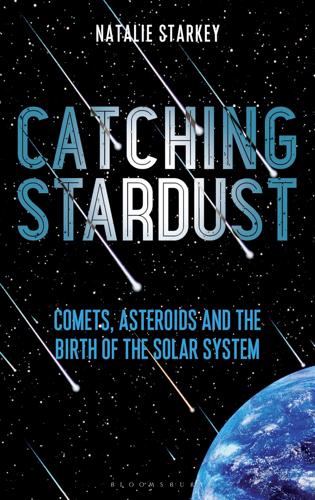
Catching Stardust: Comets, Asteroids and the Birth of the Solar System
by
Natalie Starkey
Published 8 Mar 2018
The closer comet neighbourhood is the Kuiper Belt, sometimes known as the Edgeworth-Kuiper Belt, which is still 10 times further from the Sun than the asteroid belt. The Kuiper Belt acts much like the outer suburbs of the city, not quite the very edge, but a journey into the city would be a long and arduous one. The Kuiper Belt was first observed in 1992, with its existence having been predicted in 1951 by the Dutch-American astronomer Gerard Kuiper. It was found to be made up of hundreds of millions of icy objects which inhabit a region 30 to 55AU from the Sun. The Kuiper Belt includes not only comets but some icy dwarf planets such as Pluto, highlighting the fact that it is made up of a range of different-sized objects.
…
Despite this, the comets still formed at the largest heliocentric distances of any Solar System objects. You’ll recall that the Kuiper Belt comets are thought to have formed further out than the Oort Cloud comets, even though it is the Oort Cloud comets that are now the furthest away. This causes some confusion as to what can be expected for the D/H ratios of these different objects. Early observations of a Kuiper Belt comet, 103P/Hartley 2, by ESA’s Herschel Space Observatory found its D/H ratio to match perfectly with Earth’s water. This was an interesting discovery, and one that was used at the time to suggest that Kuiper Belt comets could represent the source of Earth’s water, having collided with Earth during the Late Heavy Bombardment (LHB) and parachuted in their volatile inventory.
…
New Horizons captured countless stunning images of Pluto’s icy terrains, surfaces that we can probably expect some its Kuiper Belt neighbours to mirror. Like many of the objects in the Kuiper Belt, Pluto was an unknown entity, as telescopic studies have been of limited use due to its vast distance from us. When the first images of Pluto’s faraway world appeared, even the scientists were surprised with what they saw. The ice composing Pluto’s surface seemed to act more like rock than a dormant blob of ice. Pluto appeared to have been active in relatively recent geological history. It shows us that there is still a lot to learn about Pluto’s smaller Kuiper Belt neighbours, but this will involve getting a closer glimpse of their surfaces than can be achieved with telescopic study alone.
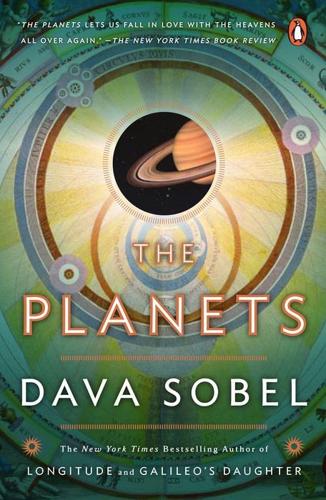
The Planets
by
Dava Sobel
Published 1 Jan 2005
Gerard Kuiper based his prediction of what is now called the Kuiper Belt on the motions of short-period comets such as Comet Halley and Comet Encke. Calculated orbits for these bodies suggested they originated in the Kuiper Belt region, and returned to it whenever they disappeared from view. In 1950, the same year Kuiper published this idea, Dutch astronomer Jan Oort used a similar argument to predict another, more distant reservoir of comets at 50,000 AU. While the Kuiper Belt is shaped as a torus (donut), the “Oort Cloud” forms a spherical shell. The orbits of short-period comets from the Kuiper Belt rarely incline more than twenty degrees from the plane of the ecliptic. Long-period comets from the Oort Cloud, on the other hand, may travel paths of any inclination, even perpendicular to the ecliptic.
…
Half a century later, when Kuiper’s myriads began to materialize in the trans-Neptunian deep, astronomers recognized them as his hypothesis come real. The steadily increasing census of the Kuiper Belt counts Quaoar, Varuna, and Ixion, all discovered in 2001 and 2002, among its larger constituents. Their names reflect a modern ethic of ethnic awareness: Quaoar is the creation force recognized by the Tonga tribe, the original inhabitants of what is now Los Angeles. Pluto, the premier object in the Kuiper Belt, follows a steeply inclined and highly elliptical orbit. Over a period of 248 years, Pluto alternately soars above the plane of the Solar System and dives below it, strays out to almost twice Neptune’s distance from the Sun at one extreme and ducks inside the orbit of Neptune at the other.* This wandering path, so different from that of any other planet, helped brand Pluto as an oddball from its earliest days.
…
Over a period of 248 years, Pluto alternately soars above the plane of the Solar System and dives below it, strays out to almost twice Neptune’s distance from the Sun at one extreme and ducks inside the orbit of Neptune at the other.* This wandering path, so different from that of any other planet, helped brand Pluto as an oddball from its earliest days. By the standards of the Kuiper Belt, however, the orbit appears common. Some 150 other Kuiper Belt objects trace the same course, and they all avoid collision with Neptune thanks to the resonance agreement among them: Neptune circles the Sun three times in the time it takes Pluto and company to go around twice. When Pluto trespasses into Neptune’s orbit, it does so always at the height of its swing, leaving Neptune far below and at least a quarter-turn away.
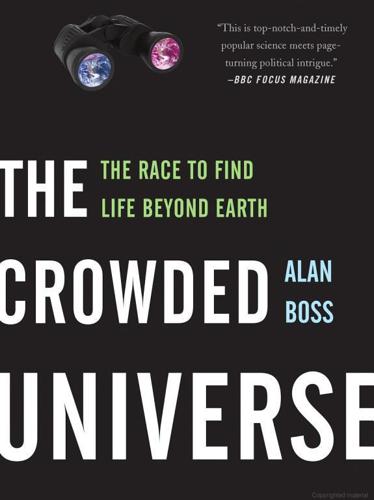
The Crowded Universe: The Search for Living Planets
by
Alan Boss
Published 3 Feb 2009
Wetherill had shocked the audience of several hundred astronomers and planetary scientists by pointing out that the mere fact that the one known planetary system contained a Jupiter did not necessarily mean that Jupiters were common. Jupiter protects us from the comets that revolve in the Kuiper Belt beyond Neptune’s orbit. When a malevolent comet decides to break out of the Kuiper Belt and make a suicidal dash toward Earth, Jupiter plays the role of the batsman protecting the wicket in a cricket match. It swats the comet out of the Solar System, or forces it to smash harmlessly into the Sun, or takes it right in the face, as Jupiter did with the startling collision of Comet Shoemaker-Levy 9 just 2 years later, in 1994.
…
The IAU had been wrestling with the issue of planethood well before Xena made her appearance on stage. A Working Group on the Definition of a Planet had been created in June 2004 to deal with the problem of Pluto’s planethood. It had become clear that Pluto was the largest known member of the swarm of comets in the Kuiper Belt, a region named after the same Gerard Kuiper who had first suggested gravitational instability as a means for forming gas giant planets. Many Kuiper Belt objects have orbits similar to that of Pluto, and they had been found by the hundreds, making the situation similar to that of Ceres in the asteroid belt. Ceres was discovered in 1801 by the Sicilian astronomer Giuseppe Piazzi.
…
By this time it was clear that Ceres was just one of a number of objects orbiting between Mars and Jupiter, and these became known as the minor planets in recognition of their diminutive stature compared to the eight major planets. We now know that the asteroid belt is populated by many hundreds of thousands of bodies large enough to be detected from Earth. The same fate had befallen Pluto. It was merely the first—and so far the largest, until Xena—body detected in the Kuiper Belt. By the same reasoning that had led to the demise of Ceres’s claims to planethood in the early 1800s, it seemed that Pluto deserved a similar demotion. The IAU Working Group on Extrasolar Planets had agreed in 2001 on a “working definition” of a planet that could be applied to extrasolar planetary systems.

Asteroid Mining 101: Wealth for the New Space Economy
by
John Lewis
Published 22 Jul 2014
Non-resonant bodies in similar orbits would encounter Neptune from time to time and be destroyed or perturbed into eccentric and unstable orbits such as those followed by the Centaurs. Beyond Pluto there are also many bodies with orbital semimajor axes between about 41 and 47 AU and low eccentricities. These bodies are referred to as the “Kuiper Belt” or as “cubewanos”, a whimsical reference to the type example, 15760 1992 QB1. The largest known Kuiper Belt body (1995 SM55) has a diameter of 813 km, and the population of the Kuiper Belt is estimated as 100,000 bodies, for an aggregate of about one Earth mass. Finally there is a population of “scattered disk objects” (“SDOs”) with a > 41 AU and eccentricities ranging from about 0.2 to 0.9.
…
Beyond the orbit of Neptune lies the realm of trans-Neptunian objects (TNOs), including the plutinos, whose mean distance from the Sun is greater than that of Neptune, but which follow orbits that cross Neptune’s orbit. Pluto itself is one member of this family, the one that is most easily observed from Earth. Beyond the plutinos we have the cubewano family. These distant bodies are historically described as Kuiper Belt objects after planetary astronomer Gerard P. Kuiper, who first proposed their existence. Far beyond the Kuiper Belt, following orbits of random inclination and high eccentricity, is the Oort cloud of long-period comets, named after Dutch astronomer Jan Oort, who first deduced the cloud’s existence. These comets typically have orbital semimajor axes on the order of 10,000 AU and periods of millions of years.
…
The remainder of the 20th century contained discoveries of many more small satellites, powerfully assisted by the Voyager spacecraft flybys of the giant planets and by great advances in electronic detection and imaging systems on Earth and in near-Earth space, on the Hubble Space Telescope. The first Centaur, Chiron, was discovered in 1977, and many more have been added since 1992. Since the Kuiper Belt was discovered in 1992, well over 1000 Kuiper Belt Objects (KBOs) have been catalogued. The clean division of small Solar System bodies into discrete families has motivated theoretical modeling of their orbits, including the evolution of these orbits over long periods of time. These studies revealed that the mean lifetime of an NEA is about 30 million years, and that the main mechanisms for loss of these bodies were impact on a terrestrial planet or perturbation into Jupiter approaching orbits, from which the body could strike Jupiter, or could be ejected from the Solar System, or even fall into the Sun.

The Last Stargazers: The Enduring Story of Astronomy's Vanishing Explorers
by
Emily Levesque
Published 3 Aug 2020
In 1992, Dave Jewitt and Jane Luu were observing at the University of Hawaii eighty-eight-inch telescope and undertaking a dedicated search for Kuiper Belt objects. The Kuiper Belt (named for airborne astronomy pioneer Gerard Kuiper) is a wide ring of small solar system objects, made mainly of rock and ice, that begins just past the orbit of Neptune and stretches to a distance of 4.6 billion miles away from the sun. Today, Pluto and its moon, Charon, are considered members of the Kuiper Belt, but in 1992, with Pluto still designated as a planet, Dave and Jane were leading the search to discover the first object in this hypothesized fleet of small solar system objects.
…
In 2014, astronomers discovered a little rocky object named 2014 MU69 in the Kuiper Belt, the wide ring of small rocky bodies orbiting our sun in the outer reaches of the solar system. The object itself wasn’t especially remarkable save for one key fact: we’d be able to pay it a visit in 2018. The New Horizons space probe had launched in 2006 and taken a nine-year trip to fly past Pluto and take the first close photographs of the dwarf planet’s surface. The flyby was a resounding success, and after zooming past Pluto, New Horizons was still flying. Anticipating this, astronomers had searched for a suitable object in the Kuiper Belt for New Horizons to aim for and came up with 2014 MU69.
…
The change in plans was partly done for the science but also partly done out of caution; the thing was moving, after all, and what if they moved on and then never found it again? In the end, they were able to measure a distance and a size for the object, confirming it as the first discovery of a Kuiper Belt object. Today, it’s known as Albion, a rocky body over seventy miles in diameter orbiting the sun from just over four billion miles away, and it’s one of an estimated thirty-five thousand objects like it in the Kuiper Belt. In other cases, astronomers will rely on friends and acquaintances or simply the power of persuasion to capture and follow an exciting new object in the sky. Edo Berger’s email to my colleagues and me, asking us to observe the GW 170817 counterpart, was one of these; he saw our names on the telescope’s schedule and knew us well enough to send an email and ask if we wouldn’t mind interrupting our time for his urgent observations.

Fire and Ice: The Volcanoes of the Solar System
by
Natalie Starkey
Published 29 Sep 2021
Despite its rather fast and fleeting encounter with Pluto and its moons, New Horizons revealed a system of worlds that were much more interesting, and active, than had been forecast. Pluto and its moons are primitive bodies, much like the other icy objects that share the Kuiper Belt region in which it orbits past our outermost planet. These objects are thought to have formed at the beginning of the Solar System, around 4.6 billion years ago, even before the planets, and thus represent the oldest objects to orbit our star. The Kuiper Belt is cold, and everything within it was long thought to be frozen in time since the formation of the Solar System. Sure enough, some Kuiper Belt objects sometimes find their way closer to the Sun as comets that get heated up, releasing their ancient inventory of frozen volatiles and dust as they transit through the inner Solar System.
…
We’ve been able to send space missions up to visit some of these when they pass closer to Earth and learn about the materials they contain. But Pluto, the so-called King of the Kuiper Belt, thanks to its large size, will never be a comet, and so learning about this far-flung world is harder. What New Horizons revealed at Pluto was a world frozen solid, but one that was not frozen in time. It was long known that Pluto was different from many of the other Kuiper Belt objects, being large enough to once be classed as a planet. Of course, now we know that while it is still the largest object in the Kuiper Belt, it is not the only large object out there. Other dwarf planets such as Sedna and Eris have since been discovered, meaning this very mysterious and far-flung part of the Solar System has become even more intriguing.
…
In 2015, nearly 40 years after the Voyager spacecraft revealed the true beauty of the large planets and their satellites that share the space around our Sun, the New Horizons mission arrived at Pluto. It had never been visited by Voyager or any other spacecraft. Pluto sits within the Kuiper Belt, a region of our Solar System beyond the orbits of the planets that hosts millions of small icy objects. Pluto is often referred to as the ‘King of the Kuiper Belt’ because of its larger size in comparison to the objects surrounding it, but in reality it should share this title with a number of other large objects that have been discovered in the region in more recent years.

The Interstellar Age: Inside the Forty-Year Voyager Mission
by
Jim Bell
Published 24 Feb 2015
See Jet Propulsion Laboratory (JPL) JUICE (Jupiter Icy Moons Explorer), 126 Juno mission, 130 Jupiter Bell’s childhood telescope viewings, 13 Cassini mission, 129–130 discovery of, 103–104 Flandro’s gravity assist research, 43–46 Galileo mission, 25–26, 51, 120, 124, 126, 129, 189, 237 Great Red Spot, 103–104, 128–129 internal structure, 208 Juno mission, 130 magnetic field, 54, 73, 110, 130, 178 moons, 103, 104, 107, 108, 109, 111, 114–128, 130–132, 166–167, 241, 243 New Horizons mission, 130 Pioneer mission, 73, 103 ring discovery, 128, 144 Voyager mission, 23, 47, 48, 49, 59, 103–132, 107–108, 109, 120–121 Voyager’s radio transmissions from, 63 Jupiter Icy Moons Explorer (JUICE), 126 Kaguya, 237 KBOs (Kuiper belt objects), 147, 217–218 Kepler, 284–288 Kohlhase, Charley, 55, 68–69, 105, 106–107, 110, 135, 136, 138, 140, 147–148, 159, 182, 200, 201–202, 219 Kuiper, Gerard P., 217 Kuiper Airborne Observatory, 184 Kuiper Belt, 97, 242 Kuiper belt objects (KBOs), 147, 217–218 Laplace, Pierre-Simon, 115 Lemmon, Mark, 238–239 Le Verrier, Urbain, 43, 192–194, 211 LIFE magazine, 227, 229 Lomberg, Jon, 79, 82–84, 85, 87, 90, 91, 95, 98–99, 219–220, 282 Lopes, Rosaly, 120 Lovell, Jim, 227, 228 Lunar Orbiter I, 226–227 Magellan, 51, 195 Magnetic fields Earth, 171 Ganymede, 126 heliosphere-interstellar space boundary, 246, 249, 254, 256, 257, 259, 261, 262–264, 266, 267, 269, 271 Jupiter, 54, 73, 110, 130, 178 measurement tools, 16 Neptune, 200, 209–210 Saturn, 73, 135, 178 Stone’s research, 16–17 Uranus, 37, 170–171, 177–180, 185 Magnetometers, 16 Malin Space Science Systems, 39 Mariner 2, 50 Mariner 4, 50 Mariner 5, 50 Mariner 6, 50 Mariner 7, 50 Mariner 9, 50 Mariner 10, 42, 47, 50 Mariner 11, 61 Mariner 12, 61 Mariner Jupiter Saturn ’77 (MJS-77), 48, 49–61 Marley, Bob, 95 Mars atmosphere, 285 Curiosity rover mission, 10, 26, 84 life on, 131 Mariner flyby, 47 Opportunity rover mission, 10, 19, 26, 84, 230, 238–239 Spirit rover mission, 10, 19, 26, 84, 230, 238–239 Viking program, 9–10, 12, 62, 157, 183 Mars Global Surveyor mission, 39 Mars Observer spacecraft, 39 Mars Orbiter Camera (MOC), 39 Mars Pathfinder spacecraft, 10 Martin Marietta Corporation, 62 Mathematicians, 192–193 Mauna Kea Observatories, 58–59, 186, 188, 195, 205 Maxwell, James Clerk, 135 McComas, David, 266 Medici, Cosimo de’, II, 166 Mercury Galileo flyby, 237 Mariner flyby, 42, 47, 50 MESSENGER flyby, 237 orbiters, 26 planet designation, 243 transits in front of sun, 283 visibility from earth, 239 Voyager photographs, 235–236 Messages sent into space, 71–99 “Cosmic Call,” 81 introduction, 71–73 New Horizons, 97–99 Pioneer plaques, 73–77 Voyager Golden Record, 77–97 MESSENGER, 237 Methane, 139, 140, 141, 146, 177, 203, 215 Metis, 128 Milky Way galaxy, 224, 251, 290–291 Miller, Stanley, 139 Mimas, 142, 150, 166, 180 Miranda, 37, 39, 172, 177, 181–183 Mission Planning Office, 14 MJS-77 (Mariner Jupiter Saturn ’77), 48, 49–61 MOC (Mars Orbiter Camera), 39 Model rockets, 41–42 Moon (Earth), 226–227, 230, 243 Moon landing, 8–9 Moons definition of, 104–105 Jupiter, 103, 104, 107, 108, 109, 111, 114–128, 130–132, 166–167, 241, 243 Neptune, 201–203, 212–218 new discoveries from Voyager data, 211–212 Pluto, 218 Saturn, 131, 135, 142, 143, 145–148, 150, 151, 158–159, 166, 241, 243 Uranus, 180–183, 187–188 Morabito, Linda, 114–115, 116, 117–118, 119 Morrison, David, 154, 156, 157 Mt.
…
Bavarian State Opera, Munich, Wolfgang Sawallisch, conductor. 2:55 Georgian S.S.R., chorus, “Tchakrulo,” collected by Radio Moscow. 2:18 Peru, panpipes and drum, collected by Casa de la Cultura, Lima. 0:52 “Melancholy Blues,” performed by Louis Armstrong and his Hot Seven. 3:05 Azerbaijan S.S.R., bagpipes, recorded by Radio Moscow. 2:30 Stravinsky, Rite of Spring, “Sacrificial Dance,” Columbia Symphony Orchestra, Igor Stravinsky, conductor. 4:35 Bach, The Well-Tempered Clavier, Book 2, Prelude and Fugue in C, no. 1, Glenn Gould, piano. 4:48 Beethoven, Fifth Symphony, first movement, the Philharmonia Orchestra, Otto Klemperer, conductor. 7:20 Bulgaria, “Izlel je Delyo Hagdutin,” sung by Valya Balkanska. 4:59 Navajo Indians, “Night Chant,” recorded by Willard Rhodes. 0:57 Holborne, Pavans, Galliards, Almains, and Other Short Aeirs, “The Fairie Round,” performed by David Munrow and the Early Music Consort of London. 1:17 Solomon Islands, panpipes, collected by the Solomon Islands Broadcasting Service. 1:12 Peru, wedding song, recorded by John Cohen. 0:38 China, ch’in, “Flowing Streams,” performed by Kuan P’ing-hu. 7:37 India, raga, “Jaat Kahan Ho,” sung by Surshri Kesar Bai Kerkar. 3:30 “Dark Was the Night,” written and performed by Blind Willie Johnson. 3:15 Beethoven, String Quartet no. 13 in B flat, op. 130, “Cavatina,” performed by Budapest String Quartet. 6:37 THE NEXT LEVEL The NASA New Horizons spacecraft, launched in 2006 and headed for a flyby past Pluto in July 2015, is also on an escape trajectory out of the solar system—the first such spacecraft on an escape trajectory since the Voyagers, and following a path similar to one of the Jupiter-Pluto missions that Gary Flandro and others charted in the mid-1960s. It is destined to continue on through a zone of thousands of small, icy planets beyond Neptune called the Kuiper Belt and enter interstellar space sometime in the next few decades. But it was launched without an interstellar message like Voyager’s on board. Perhaps this is a sign of a more anxious age. In any case, a group of people led by Jon Lomberg are awaiting expected approval by NASA to upload a yet-to-be-determined “digital interstellar message” into the New Horizons spacecraft’s permanent long-term flash memory once the mission has completed its science objectives.
…
If Voyager 1 hadn’t been targeted so closely to Titan and had instead been able to be diverted by Saturn’s gravity toward a flyby of Pluto in the 1980s, as NASA had envisioned for some of the original Grand Tour missions proposed in 1969–1970, we would have discovered much sooner that Pluto is a small world with a thin atmosphere, a surface mostly made of nitrogen ice, and orbited by at least five moons rather than just the one large one discovered from Earth-based telescopes in 1978. Maybe active plumes or nitrogen-powered volcanoes would have been discovered. Charley Kohlhase is less sanguine. “I don’t think a far-off little, now–Kuiper Belt Object like Pluto, and the trip time and whether you could make it there or not, would ever have beaten out Titan. Most of the people I knew did not regret giving up on Pluto. We were happy to go with Jupiter-Saturn-Titan for Voyager 1, and the smaller Grand Tour Jupiter-Saturn-Uranus-Neptune with Voyager 2.”
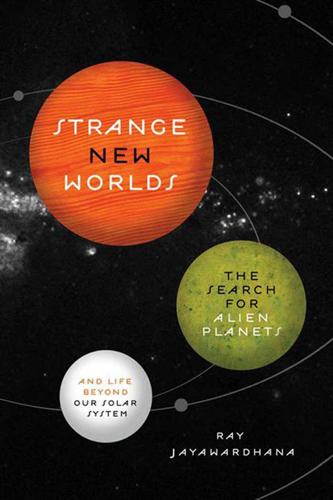
Strange New Worlds: The Search for Alien Planets and Life Beyond Our Solar System
by
Ray Jayawardhana
Published 3 Feb 2011
The almost face-on disk around epsilon Eridani, which is a mere ten light-years away, is of special interest: it clearly shows a central cavity as well as a bright spot in the ring of dust. At an age of about 500 million years, that star must be well past the main epoch of planet formation. The dust ring is at roughly the same distance from epsilon Eridani as the Kuiper Belt of comets is from the Sun. Most likely, what we are looking at is the dust debris in a young Kuiper Belt analog around another star. The bright “blob” might be dust trapped in the orbit of an unseen planet. Newsweek magazine published a cover story, “The Birth of Planets,” in its May 4 issue, reporting on the HR 4796A disk as well as these four.
…
That’s when David Jewitt and Jane Luu, two astronomers using the University of Hawaii’s 2.2-meter telescope on Mauna Kea, discovered a faint slow-moving object dubbed 1992 QB1. Follow-up observations confrmed it as a member of the Kuiper Belt, a population of icy bodies beyond Neptune, frst hypothesized almost ffty years earlier as a reservoir of short-period comets. Since then, astronomers have identifed over a thousand other such bodies, and it became increasingly clear that Pluto belongs to the same population. With the discovery of several large Kuiper Belt objects in recent years, some more than half the size of Pluto and harboring moons just like it does, Pluto’s special status was under threat.
…
“This is the frst image of a multi-planet system, and these exoplan-ets are also the frst at separations similar to Uranus and Neptune to be discovered by any means,” wrote Marois. Interestingly, the host star shows excess infrared emission—evidence of a dust belt located outside the new planets, somewhat akin to the Kuiper Belt beyond Neptune in our solar system. The researchers did not have spectra of the planets in hand, but were able to see their orbital motion around the star. That’s because the two outer planets were recovered in an image taken four years earlier with Keck, and the innermost (thus the fastest) one was seen to move over the course of a year.
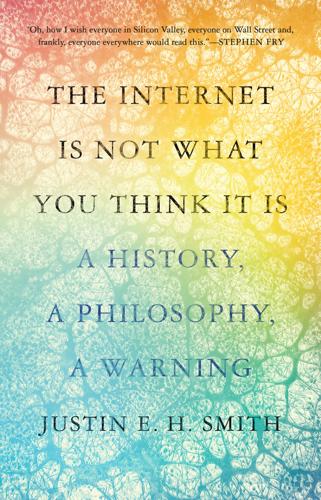
The Internet Is Not What You Think It Is: A History, a Philosophy, a Warning
by
Justin E. H. Smith
Published 22 Mar 2022
Again, in many cases the report from such an instrument that the scientist is reading from a screen in a laboratory is the same as the report that I could also view on my screen at home, or that the scientist could have received on her screen, with all the right top-secret passwords, if she had stayed home. If I want access to the Kuiper Belt, if I want to do the closest thing to voyaging to the Kuiper Belt of which humanity is at present capable, I am for most purposes just as well positioned to set out on such a voyage at home as I am at the world’s most advanced observatories. It might seem that this ability, to voyage while remaining at home, is one that has only arrived with the most recent technologies, but in a well-appointed cell such as Burton’s, with multiple volumes of works of cosmography, the experience was no doubt not so unlike my own late-night visits to websites with NASA satellite images.
…
There is a sense in reading about these latter things that if we come to be deeply interested in them, we must put down the books at some point and go have a look at the real thing, which, unlike the Kuiper Belt objects and the stars beyond them, we are in fact capable of studying up close. And yet the book is not simply a consolation for the inaccessibility of the thing that interests us. Sometimes it is a supplement, giving us a different sort of access to the thing that we might also study up close. It is never a replacement for the thing, though it may at least be a temporary stand-in for the thing until we figure out how to access it (either for reasons of physical distance, such as the Kuiper Belt, or because its nature is not known and its very existence is in doubt, such as God, numbers, justice, and all the other usual objects of philosophy).
…
The result is a deeply personal, subjective, and often histrionic approach to science, whether of the human body, or the celestial bodies, or of anything else on which he feels inclined to digress. This is Burton’s “world,” and he knows it and loves it from within the security and comfort of his cramped and book-laden cell. As for me, my browser history reports that last night, between one and two in the morning, I passed, with a few intermediate clicks, from the Wikipedia page on the Kuiper Belt (a part of our solar system beyond Pluto), to crop milk (a secretion regurgitated by parent birds of some species for the feeding of their young), to the Hesychast controversy (a theological dispute in fourteenth-century Byzantium). This was a fairly typical evening for me, part of a circadian rhythm in which my diurnal work, intense and focused, gives way in the night to desultory and stochastic exploration of what I take to be my “world,” which includes all the objects in orbit of our sun, all living creatures on earth, all the strange controversies the theologians have taken so seriously, and so much more besides.

The Case for Space: How the Revolution in Spaceflight Opens Up a Future of Limitless Possibility
by
Robert Zubrin
Published 30 Apr 2019
Thus, once there is helium-3 commerce to be supported in the outer solar system, Jupiter, using the resources of its outer moons and its gravity well, could develop as an important solar system transportation node. Nineteenth-century New Englanders thought they had an unmatchable racket going selling ice. Imagine the envy of those sharp-minded old-time Yankees if they could awake from their graves and look into the future to see Callisto colonists selling…gravity! THE KUIPER BELT AND OORT CLOUD It is generally considered that beyond the Sun's family of planets there is absolute emptiness extending for light-years until you come to another star. In fact it is likely that the space around the Solar System is populated by huge numbers of comets, small worlds a few miles in diameter, rich in water and other chemicals essential to life….
…
In fact it is likely that the space around the Solar System is populated by huge numbers of comets, small worlds a few miles in diameter, rich in water and other chemicals essential to life…. Comets, not planets, are the major potential habitat of life in space. —Freeman Dyson, 1972 As mentioned earlier, beyond Neptune lie two zones of asteroid-sized objects rich in volatiles. The innermost such region is the Kuiper Belt. Consisting of millions of iceteroids orbiting more or less in the same plane as the planets (“the ecliptic”), it begins about 30 AU and extends to perhaps 50 AU. There then appears to be a gap largely free of such objects, until at about 1,000 AU a new iceteroid zone begins. This is the Oort cloud, whose trillions of frozen objects populate a sphere surrounding our solar system in all directions out to about 100,000 AU—roughly halfway to the nearest star.
…
However, unlike near-Earth asteroids, which spend their lives in the inner solar system and which can, in principle, be spotted and have their trajectories mapped many orbits before a potential Earth-smashing collision, comets can emerge from the dark and come in fast and hard with the advantage of surprise. The only way to control them is to detect and deflect them while they are still very far out. This means that someday, for security purposes if no other, there will be a need for a substantial human presence and technical capability in both the Kuiper Belt and the Oort cloud. But there may be other reasons that drive humans to populate this vast archipelago of cosmic islands. Based on analysis of comets, it's fairly clear that the volatile iceteroids of the Oort cloud are rich not just in water but in carbon and nitrogen, much of it in the form of the usual compounds of organic chemistry and life.
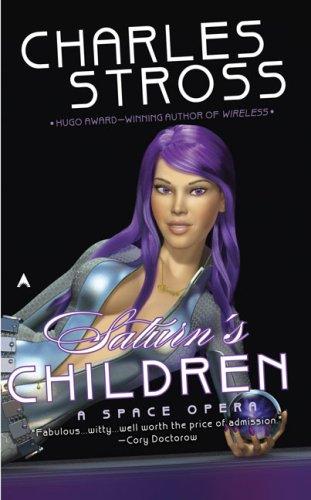
Saturn's Children
by
Charles Stross
Published 30 Jun 2008
And it’s full of life. The inhabitants of Heinleingrad have no phobia of green goo replication, or even of pink goo. In part it’s because the Kuiper Belt colonials are mainly robust nonanthropomorphs, who were never subjected to the grueling submission conditioning required from those of us who might mingle with our Creators in person—but that’s not the only reason. The Replication Suppression Agency has been spanked out of Eris-proximate space, and indeed out of many of the other Kuiper Belt worlds like Quaoar and Pluto-Charon and Sedna. Nobody here gives a fuck what they think because, frankly, the chances of replicators from one of these icy realms ever reaching sterile Earth’s atmosphere are minimal, and in the meantime, bioreplicators are vital to business.
…
At noon, things get a little hot on the surface—even hotter than down among the half-melted valleys of Venus. At midnight it’s as cold as Pluto or Eris. They build power plants here, vast beampower stations that fly in solar orbit, exporting infrared power to the shipyards of the dwarf planets of the Kuiper Belt, out beyond Neptune. To build and launch those power plants, they need heavy elements—mined locally. And guess what? Someone needs to run those mines. To avoid the extremes of temperature, the city of Cinnabar rolls steadily around the equator of Mercury on rails, chasing the fiery dawn. Thermocouples on the rails drain the heat of daylight into the chill of the wintry night, extracting power to propel the city at a fast walking pace, year in and year out.
…
“But my bellboys managed to track them down. And I gather they’re going to have a very chilly night.” “Chilly—” “Yes, they’re bound for the darkside now.” Where the icicle-bright stars come out and the ground cools down, and the only things that move are the migratory exopods of the renegades who have fled the Forbidden Cities of the Kuiper Belt for the one place in the solar system that’s even colder than the backside of Pluto. I shiver. “Thank you, Paris.” “For you, my dear? Anytime.” MOST PEOPLE HAVE a mild phobia of nanoscale replicators. From our earliest days we’ve heard horror stories about pink and green goo, unconstrained mutation engines that can overrun a factory or city in a matter of weeks.
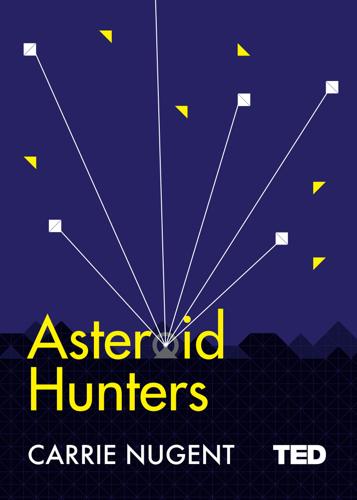
Asteroid Hunters (TED Books)
by
Carrie Nugent
Published 14 Mar 2017
There’s a class of asteroids called trojans that hangs out along Jupiter’s orbit, clustering a little before and a little after that planet as it orbits the Sun. Some of the moons of Jupiter and Saturn are probably asteroids that have gotten caught by the gravity of those giant planets. There are tens of thousands of rocky, icy objects beyond the orbit of Neptune in a region called the “Kuiper Belt,” and perhaps many more beyond that in a region called the “Oort Cloud. ” There are also comets. Comets, which occasionally light up the sky with their spectacular tails, have been known to humanity as long as the stars have. Traditionally, comets and asteroids were thought to be totally different types of objects—asteroids were made of rock or metal, and comets were made of rock and ice.
…
Nature Scientific Reports 3 (December 2013): doi:10.1038/srep03411. Mainzer, Amy et al. “Characterizing Subpopulations within the Near-Earth Objects with NEOWISE: Preliminary Results.” The Astrophysical Journal 752, no. 2 (June 2012). Petit, J.-M. et al. “The Canada-France Ecliptic Plane Survey—Full Data Release: The Orbital Structure of the Kuiper Belt.” The Astronomical Journal 142, no. 4 (September 2011). Russell, C. T. et al. “Dawn at Vesta: Testing the Protoplanetary Paradigm.” Science 336, no. 6082 (May 2012): doi:10.1126/science.1219381. Things that Hit the Earth Auer, Matthias and Mark K. Prior. “A New Era of Nuclear Test Verification.”
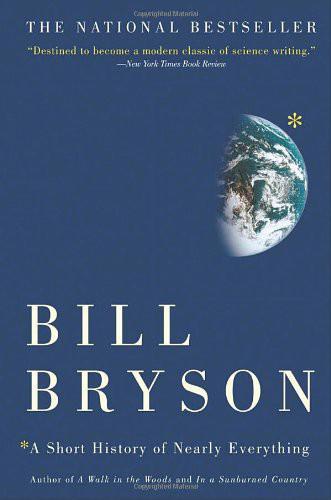
A Short History of Nearly Everything
by
Bill Bryson
Published 5 May 2003
As for Pluto itself, nobody is quite sure how big it is, or what it is made of, what kind of atmosphere it has, or even what it really is. A lot of astronomers believe it isn't a planet at all, but merely the largest object so far found in a zone of galactic debris known as the Kuiper belt. The Kuiper belt was actually theorized by an astronomer named F. C. Leonard in 1930, but the name honors Gerard Kuiper, a Dutch native working in America, who expanded the idea. The Kuiper belt is the source of what are known as short-period comets—those that come past pretty regularly—of which the most famous is Halley's comet. The more reclusive long-period comets (among them the recent visitors Hale-Bopp and Hyakutake) come from the much more distant Oort cloud, about which more presently.
…
Tombaugh paper, “The Struggles to Find the Ninth Planet,” from NASA website. 8 “there may be a Planet X out there . . .” Economist, “X Marks the Spot,” October 16, 1999, p. 83. 9 “The Kuiper belt was actually theorized . . .” Nature, “Almost Planet X,” May 24, 2001, p. 423. 10 “Only on February 11, 1999, did Pluto return . . .” Economist, “Pluto Out in the Cold,” February 6, 1999, p. 85. 11 “over six hundred additional Trans-Neptunian Objects . . .” Nature, “Seeing Double in the Kuiper Belt,” December 12, 2002, p. 618. 12 “about the same as a lump of charcoal . . .” Nature, “Almost Planet X,” May 24, 2001, p. 423. 13 “now flying away from us . . .”
…
By the early 1900s, it had often become impossible to know whether an asteroid that popped into view was new or simply one that had been noted earlier and then lost track of. By this time, too, astrophysics had moved on so much that few astronomers wanted to devote their lives to anything as mundane as rocky planetoids. Only a few astronomers, notably Gerard Kuiper, the Dutch-born astronomer for whom the Kuiper belt of comets is named, took any interest in the solar system at all. Thanks to his work at the McDonald Observatory in Texas, followed later by work done by others at the Minor Planet Center in Cincinnati and the Spacewatch project in Arizona, a long list of lost asteroids was gradually whittled down until by the close of the twentieth century only one known asteroid was unaccounted for—an object called 719 Albert.

Scratch Monkey
by
Stross, Charles
Published 1 Jan 2011
A spongy diamond the size of a planet swings through a planetary nebula; nanorobots riddle it, busy etching many-dimensional networks of simple processors into its delicate filigree of surfaces. Meanwhile, other constructors fashion condensing hydrocarbons into strange, lacy structures in deep orbit through the star's Kuiper belt, the distant realm of the ice dwarfs that circle beyond the farthest gas giants. Halos and rings a million kilometres across flutter like huge parasols, strobing with the excrement of a billion billion optical processors. And it still isn't enough. The Ultrabrights, lusting for the power to transcend their information-flow bounded existence, turn their attention to the star.
…
The question hung in the air for long seconds, until she wondered if she'd made a terrible mistake in asking. "A long time ago," Boris said slowly, "I made a mistake. I'm still paying for it." He didn't say anything more until Oshi prompted: "yes?" Suddenly his eyes were burning, burning through her like drills. "I assumed that ignorance was a sufficient defense. We knew what was going on in the Kuiper belt, battles between Ultrabright factions, Superbright complexes going NP-slow, big energy-intensive restructuring in the Oort halo around the outer system. But it didn't seem to effect us: it had been going on for decades, after all. We humans, huddling close to the sun, we weren't going to be effected, were we?"
…
She had a sudden, ghastly vision: eighty ships launched into the void with insufficient reaction mass to return and nothing much to go back to anyway. The enemy ship, listening to the orders of a silent voice, fired up its black-hole powered drive, squashed atoms into fragments of exotic energy, accelerated outwards. The eighty ships drifted endlessly out into the Kuiper belt on a long, slow orbit that took their mummified crews ten thousand years out into the starry night before falling back sunwards. Oshi tugged on her monofilament reels, adjusting her position relative to the wall of the docking bay. The ugly vision receded. She chuckled tiredly to herself and spooled in some cable, dragging herself round the command module of the spaceship.

2312
by
Kim Stanley Robinson
Published 22 May 2012
Wahram, who had rolled over and joined them, said, “But what will you bombard it with this time? You won’t be taking any moons and cutting them up.” “No,” the old one said. “That was part of the going too fast. But there are many Neptunian Trojans to be sent down.” “Aren’t the Tritons developing those?” “There are thousands of them. And they are all Kuiper belt captures. We could replace from the Kuiper belt, if the Tritons want. So nothing need be lost as far as Neptune is concerned. The Tritons already agree to the principle.” “Well,” Swan said, baffled. She didn’t know what to say. She regarded their faces, so grim and irritated. “Is it what the people here want? Can you tell?”
…
She wanted him to arrange the dive into Saturn, if possible, and then join them in it. “That would be fine,” he replied; “I am at your disposal.” Which was certainly one way of putting it. Lists (8) Prometheus, Pandora, Janus, Epimetheus, and Mimas; these are the moons that shepherd Saturn’s rings. The rings are only 400 million years old, the result of a passing Kuiper belt ice asteroid being stripped to its core when it passed Saturn too closely. Mimas, the bull’s-eye moon, is 400 kilometers in diameter, while its crater Herschel is 140. The Herschel impact nearly blew Mimas apart. Hyperion is a fragment of a similar collision that did blow a moon apart; it is shaped like a hockey puck.
…
A suite of microscopic life-forms was discovered in the Enceladan ocean in the year 2244, and scientific stations have been established on its surface, as well as a cult of votaries who ingest a suite of the alien life-forms, to unknown effect. There are twenty-six irregular small moons. These are all Kuiper belt objects, captured as they crossed Saturn’s earliest gas envelope. Phoebe, at 220 kilometers across, is the largest of these, and it has a retrograde and highly inclined orbit, twenty-six degrees out of the plane; thus another popular viewing platform. Titan, by far the largest Saturnian moon, is bigger than Mercury or Pluto.

Space Chronicles: Facing the Ultimate Frontier
by
Neil Degrasse Tyson
and
Avis Lang
Published 27 Feb 2012
Several of the Apollo missions to the Moon, as well as Pioneer 10 and 11 (now about ten billion miles from Earth and destined for interstellar space), Viking 1 and 2 (to Mars), Voyager 1 and 2 (also destined for interstellar space and, in the case of Voyager 1, farther along than the Pioneers), Ulysses (to the Sun), Cassini (to Saturn), and New Horizons (to Pluto and the Kuiper Belt), among others, have all used plutonium for their radioisotope thermoelectric generators, or RTGs. An RTG is a long-lasting source of nuclear power. Much more efficient, and much more energetic, would be a nuclear reactor that could supply both power and propulsion. Nuclear power in any form, of course, is anathema to some people.
…
Serious investigation began in 1994, the first research paper about it appeared in 1998, and since then all sorts of explanations have been proffered to account for the anomaly. Contenders that have now been ruled out include software bugs, leaky valves in the midcourse-correction rockets, the solar wind interacting with the probes’ radio signals, the probes’ magnetic fields interacting with the Sun’s magnetic field, the gravity exerted by newly discovered Kuiper Belt objects, the deformability of space and time, and the accelerating expansion of the universe. The remaining explanations range from the everyday to the exotic. Among them is the suspicion that in the outer solar system, Newtonian gravity begins to fail. The very first spacecraft in the Pioneer program—Pioneer 0 (that’s right, “zero”)—was launched, unsuccessfully, in the summer of 1958.
…
Kennedy, USS, 5 Johnson, Lyndon B., 66–67, 124 Johnson Space Center, 8, 220 Journey to Inspire, Innovate, and Discover, A: Moon, Mars and Beyond, 146 Jupiter, 32, 33, 37, 40, 46, 52, 85, 88, 102, 112, 115, 117, 128, 157, 201, 245, 246 slingshot effect and, 119–20 Jupiter-C rocket, 126 Jupiter Icy Moons Orbiter (JIMO), 169–70 Kazakhstan, 121, 123 Kelvin, Lord, 108 Kennedy, John F., 4, 8, 11, 12, 13, 17, 79, 136, 219, 225 “Moon” speech of, 13, 79, 148–49, 191–92 Kennedy Space Center, 14–15, 16, 140, 145, 161, 220, 229 Kepler, Johannes, 115 Kinsella, Gary, 249–50 Korea, Republic of (South Korea), xiv Korean War, 149 Korolev, Sergei, 123–24, 126 Kubrick, Stanley, 128–29 Kuiper Belt, 168, 245 Kuwait, 27 Lagrange, Joseph-Louis, 173, 176 Lagrangian points, 72, 145, 173–76 gravity and, 172–74 launches from, 177 libration paths and, 174 NASA satellites and, 176 Laika (dog), 122 Langley, Samuel P., 216–17 Laplace, Pierre-Simon de, 117–18 Large Hadron Collider, 80, 82 lasers, 167 Lauer, Matt, 210–11 Launching Science, 169–70 Leno, Jay, 144–45 Le Verrier, Urbain-Jean-Joseph, 248 L5 Society, 175 life: chemical components of, 35–36 diversity of, 34–35 extinction episodes of, 49 extraterrestrial, see extraterrestrial life on Mars, 48, 259 search for, 41, 325 light, 30, 90, 93, 258 speed of, 109, 164, 195 LightSail-1, 167 Lindbergh, Charles, 110 Lindsay, John, 67 Lockheed Martin, 236 Lombardi Comprehensive Cancer Center, 23 long-period comets, 46–47 Lovell, Jim, 112 low Earth orbit (LEO), 113 Luna 9 rover, 70 Luna 13 rover, 70 Lunar Orbiter Image Recovery Project, 149–50 Lunar Orbiter spacecraft, 149 Lunar Reconnaissance Orbiter (LRO), 150 MacHale, Des, 234 Madonna, 203 Magellan, Ferdinand, 95, 96 Major Mysteries of Science (Garbedian), 110 Manhattan Project, 80 many-body problem, 117–18 Mars, 7, 8, 14, 40, 46, 55, 77, 115, 129, 168, 188, 195, 200, 209 cratering on, 52 Earth viewed from, 27 life on, 48, 259 methane on, 31, 78, 138 proposed mission to, 78–79, 81–83 rocks ejected from, 48–49 rovers on, 130–33, 134, 138, 163, 198 Soviet achievements and, 122 water on, 48, 134, 138, 201, 227 Mars Express Orbiter, 138 Mars Global Surveyor, 138 Marshall Space Flight Center, 67 Mars Society, 236 mass extinction, 51 McAuliffe, Christa, 243 McDonald’s, 238 McNair, Ron, 234 Mécanique Céleste (Laplace), 117 Mercury (god), 108 Mercury (planet), 52, 115, 118 orbit of, 248 Mercury program, 7, 114 MESSENGER probe, 139 meteorites, 48 Tunguska River impact of, 50 see also asteroids methane, 30 on Mars, 31, 78, 138 on Titan, 138–39 Mexico, 50 microscope, 85–86 Microsoft, 136 microwaves, 41, 90, 91–92, 129, 141 microwave telescope, 91–92 Milky Way galaxy, 34, 41, 93, 97–101, 143, 147, 259 Andromeda galaxy and, 118–19 orbit of stars in, 118 radio emissions from center of, 90 Shapley-Curtis debate on, 98–101 Mir space station, 6, 165, 319 Mitchell, Edgar, 3 Mongols, 205–6 Moon, xiii–xiv, 4, 5, 6, 8, 11, 12, 13, 14, 21, 46, 47, 66, 69, 70, 71, 72, 86, 89, 97, 111–12, 119, 132, 149, 186, 195, 196, 200, 220, 245 cratering on, 50, 57 Earth viewed from, 27 40th anniversary of landing on, 144 proposed return mission to, 55–56, 76–77, 83 rocks ejected from, 48 Soviet achievements and, 122 see also Apollo program, Apollo 11 motion, third law of, 153, 158 multiverse, 259 NanoSail-D, 167 NASA Flexibility Act of 2004, 330 National Academy of Public Administrations, 322 National Academy of Sciences, 11, 98, 325 National Aeronautics and Space Act of 1958, xv, 4, 58, 66, 125, 252, 265–91, 328 access to information in, 273–74 aerospace vehicle in, 282–84 amended text of, 265–91 appropriations in, 284–85, 286 awards in, 278–79 civilian-military liaison in, 271 congressional reporting in, 271 excess land in, 272 insurance in, 281–84 international cooperation in, 271, 291 inventions in, 276–78 jurisdiction in, 290 launch vehicle contracts in, 285–86 lawsuits in, 279–80 misuse of name in, 285 National Advisory Committee in, 272–73 prize authority in, 286 property leases in, 289 property rights in, 276–77 purpose and objectives of, 265–67 recovery authority in, 290 security in, 274–75 transfer of functions in, 273 upper atmosphere research in, 290–91 National Aeronautics and Space Administration Authorization Act of 2000, 326–27 National Aeronautics and Space Agency (NASA), 59–60, 89, 114, 162, 166–68, 192, 199–200, 203, 219, 305, 306, 309 acquisition of space science data and, 314–15 additional activities of, 313–14 aero-space transportation technology integration plan of, 323–24 anchor tenancy contracts and, 308–9 Astronaut Pen of, 194 budget of, xiv, 10, 12, 15, 56, 75, 150, 169–70, 209–10, 212, 228, 237 carbon cycle research program of, 325–26 civil rights movement and, 66–67 creation of, 5–6, 66–67, 125, 267 decision making at, 146 deputy administrator of, 328 divisions of, 9 Earth science data sources and, 315–16 economic impact of, 237 expert input and, 146–47 Exploration Award of, 146–47 functions of, 265–72 future and, 252–53 Human Space Flight Innovative Technology program of, 324 international politics and, 5–7 Mars rovers and, 130–34 new Mars mission and, 77–78 new Moon mission and, 56, 77–78 number of employees of, 236 Obama on role of, 11–12 Obama’s vision of, 11–17 100th anniversary of flight initiative and, 326 payloads of, 313–14 political partisanship and, 4–5, 13–14 reorganization of, 329 scientific value of, 9–11 spending by, xv, 7–9, 25, 193–94, 331–32, 333–35 statutory provisions applicable to, 293–94 use of government facilities and, 309 vision statement of, 68 working capital fund of, 328 see also specific centers, programs, and vehicles National Air and Space Museum, 7–8, 23, 144 National Commission on Excellence in Education, 58 National Defense Education Act of 1958, 125 National Defense Scholarships, 125 National Geographic channel, 231 National Institute of Standards and Technology, 12, 306–7 National Institute on Disability and Rehabilitation Research, 306 National Institutes of Health, 209 National Museum of Natural History, 98 National Research Council, 169, 322 National Science Foundation, 11–12, 23, 125, 219, 305 National Security Council, 124 National Space Grant College and Fellowship Act of 1987, 295–303 administrative services, 301 appropriations, 303 competitive awards, 303 contracts, 298–99 fellowship program in, 300–301 functions of, 297–98 grants in, 298–99 identity of needs in, 299 personnel services in, 301 purpose of, 295–96 regional consortium in, 300 reports to Congress in, 302–3 review panel in, 301 National Space Institute, 175 National Space Society, 146, 175, 236 National Space Symposium, 222 National Technical Information Service, 304 “Nation at Risk, A,” 58 Natural History, xiii NBC, 144, 178 Neptune, 27, 36, 46, 115, 119, 157 discovery of, 248 Netherlands, 7 neutrinos, 94 Newcomb, Simon, 216 New Horizons spacecraft, 168 New Scientist, 123 Newton, Isaac, 65, 113–17, 119, 153, 158, 192, 247, 257 New York, N.Y., 96, 124, 224, 238 New York Times, 55, 96, 110, 124, 216–17 NEXT ion propulsion system, 170 Nigeria, 23 nitrogen, 101, 239, 240, 258 Nixon, Richard M., 4–5, 225 Nobel, Alfred Bernhard, 88 Nobel Prize, 88–89, 94, 206 North Atlantic Drift current, 93 North Carolina, 109, 216 Northrop Grumman, 236 Norway, 7 NOVA (TV series), 231 novae, 100 NRA, 236 nuclear power, 159, 168–69 numbers: Arabic, 205 increasing powers of, 237–38 Obama, Barack, 11, 14–16, 76, 186–87, 252 space policy and, 77 Obama administration, 75 Office of Federal Housing Enterprise Oversight, 311 Office of Human Spaceflight, 323–24 Office of Life and Microgravity Sciences and Applications, 323 Office of Management and Budget, 318 Office of Research and Technology Applications, 303–4, 305 Ohio, 4–5, 184–85 O’Neill, Gerard K., 8, 175 Onizuka, Ellison, 243 Opportunity (Mars exploration rover), 130–32, 138 orbits, 113–20 of Earth, 115 elongated, 115–16 free fall and, 119 many-body problem and, 117–18 of Mercury, 248 of Pluto, 115 sling-shot effect and, 119–20 of stars, 118 suborbital trajectories and, 114 three-body problem and, 116–17 of Venus, 115 Orellana, Francisco de, 197 organic chemistry, 36, 48 Origin of Species (Darwin), 98 oxygen, 31, 35–36, 101, 158, 239, 240, 258 ozone, 51, 93 Pakistan, 49 Panama Canal, 87 panspermia, 48–49, 259 Parliament, British, 217 “Passport to the Universe” (Druyan and Soter), 256 Pegasus, 108 Penzias, Arno, 92 perturbation theory, 118 Peru, 196–97 Pfeiffer, Michelle, 203 photosynthesis, 31 Pigliucci, Massimo, 75–83 Pioneer anomaly, 244–45, 248–51 Pioneer program: Pioneer 0, 245 Pioneer 3, 245 Pioneer 4, 245 Pioneer 5, 245 Pioneer 9, 245 Pioneer 10, 118, 244–45, 247, 248–50 Pioneer 11, 168, 244–45, 247, 249 Pioneer 12, 245 Pioneer 13, 245 Pizarro, Gonzalo, 196–97 planetary motion, first law of, 115 Planetary Society, 166–67, 193, 236, 250 Pluto, 82, 112, 118, 128, 168, 195, 201 orbit of, 115 Pravda, 121 Prescott, William H., 196 Presidential Commission on Implementation of United States Space Exploration Policy, 59–60, 146 President’s Commission on Higher Education, 125 Prince (singer), 203 Principia (Newton), 113 Project Prometheus, 169–70 propulsion: alternate fuels for, 157–59 antimatter drive and, 170–71 chemical fuel for, 163 electricity and, 165 in-space, 170 ion-thruster engine and, 164–65, 170 nuclear power and, 159, 168–69 rocket equation and, 153–54, 157 and slowing down, 155–56 solar sails and, 159, 165–67, 170 third law of motion and, 153, 158 xenon gas and, 164–65 Proxima Centauri, 195–96 Ptolemy, Claudius, 34, 65 pulsars, 29 Qatar, 5 quasars, 91 R-7 rocket, 126 racism, 66–67 radioisotope thermoelectric generators (RTGs), 168–69 radio telescopes, 91 radio waves, 28–29, 30, 31, 39, 90–91 radium, 96 RAND Corporation, 218 Ranger 7 spacecraft, 70 Reagan, Ronald, 5, 6 relativity, general theory of, 94–95, 101, 248, 250 relativity, special theory of, 195–96 Republicans, 4–5, 15, 17, 224–25 Resnik, Judith, 243 robots, 129, 134 in space exploration, 57, 89–90, 128, 130–32, 187, 198, 199, 202 rocket equation, 153–54, 157 rockets: flybys and, 157 liquid-fueled, 192 phallic design of, 222–23 propulsion of, see propulsion Rodriguez, Alex, 114 Röntgen, Wilhelm, 94, 96, 135 Royal Society, 216 Russia, xiv, 6, 22, 162, 168 ISS and, 319 Star City training center of, 73, 74, 207 Sagan, Carl, 27, 28, 43, 193, 256 Salyut space module, 6 Sarge (comedian), 234 satellites, xiii, xiv, 60, 71, 94 communication, 129 first US, 124–25 Saturn, 31, 82, 112, 115, 119, 138, 157, 168, 210, 225, 245 radio emissions from, 90–91 Saturn V rocket, 15, 127, 154, 158, 172, 214, 219, 220, 229 as a wonder of the modern world, 232–33 Schmitt, Harrison, 69, 132 Schwarzenegger, Arnold, 153 science, 206, 226 Arabs and, 205–6 discovery and, 98 emerging markets and, 209–10 literacy in, 57–59, 230–31, 235–36 multiple disciplines and, 209–10 Scientific American, 223 scientific method, 86 Scobee, Dick, 242 Seeking a Human Spaceflight Program Worthy of a Great Nation, 146 Senate, US, 5, 146, 328 Aeronautical and Space Sciences Committee of, 272 and appointments to Commission on Future of Aerospace Industry, 316 Appropriations Committee of, 321, 329 Commerce, Science, and Transportation Committee of, 288, 321, 323, 324, 329 sense of wonder, 64–65 September 11, 2001, terrorist attacks, 206 Sesame Street (TV show), 257 SETI (search for extraterrestrial intelligence), 41, 325 Shapley, Harlow, 98–101 Shatner, William, 180 Shaw, Brewster, 221 Shepard, Alan B., 114 short-period comets, 46 Siberia, 50 Sims, Calvin, 55–62 Sirius, 178 Skylab 1 (space station), 214 slingshot effect, 119–20 Smith, George O., 175 Smith, Michael, 242 Smithsonian Institution, 216 solar sails, 159, 165–67, 170 solar system, 34, 259 many-body problem and, 117–18 perturbation theory and, 118 solar wind, 176, 235, 245 solid rocket boosters, 155 Soter, Steven, 256 sound, speed of, 108–9 sound barrier, 109 South Africa, xiv South Pole, 76 Soviet Union, xiii, 8, 94, 133, 194, 215, 218 US rivalry with, 5–6, 59, 79, 87, 121–27, 133, 192, 219 see also Sputnik space, space exploration: colonization of, 57, 60, 102–3 cosmic microwave background in, 92, 94–95 cross-discipline endeavor in, 24–25, 230 culture and, 72–74, 147–48, 210–11 early attitudes toward, 217–18 economic motivation for, 200–201 factions against, 8–10 in Galef/Pigliucci interview of author, 75–83 inventions statute and, 311 justification for funding of, 78–81 militarization of, 60 numbers employed in, 236–37 politics and, 3–5 proposed programs and missions for, 201–2 robots and, 57, 89–90, 128, 130–32, 187, 198, 199, 202 significance of, 102 Soviet achievements in, 122–26 special interests and, 5, 236–37 stellar nurseries in, 93 technological innovation and, 12 US-Soviet rivalry and, 5–6, 59, 79, 87, 121–27, 133, 192, 219 war as driver of, 219–20 Space Cowboys (film), 162 Space Exploration Initiative, 8 Space Foundation, 221–22 Spaceguard Survey, The: Report of the NASA International Near-Earth Object Detection Workshop, 50 space junk, 176 space shuttle, 7, 12, 25, 109, 160–62, 165, 201, 202, 228, 281 contingency funding for, 321–22 fuel of, 158 launch costs of, 320–22 main parts of, 154–55 pricing policy for, 314 retirement of, 14–16, 143, 214 speed of, 222 use policy for, 312–13 weight of, 155 see also specific vehicles Space Station Freedom, 6, 8 Space Studies Board, 169 Space Technology Hall of Fame, 221, 230–31, 237 Space Telescope Science Institute, 10, 23, 135–36 Space Transportation System, 314 space travel, 191–98 coasting in, 247 in Colbert–author interview, 186–88 danger of, 198 financing of, 193–94 in Hollywood movies, 194–95 Moon missions and, 192–93 robots and, 198 special relativity and, 195–96 Space Travel Symposium, 111 Spain, 7, 87 spectroscopy, 30 Spirit (Mars exploration rover), 130–33, 138 Spitzer Space Telescope, 139 Sputnik, xiii, 5, 59, 79, 113–14, 133, 192, 218 50th anniversary of, 226 US response to, 122–24 Star City (training center), 73, 74, 207 Stars & Atoms (Eddington), 107 Star Trek (TV series), 3, 164, 170 45th anniversary of, 178–81 human behavior and, 180 technology of, 179 Star Trek: The Motion Picture (film), 37–38 Star Wars (film series), 131 State Department, US, 312 Stewart, Jon, 4 Stone, Sharon, 203 subatomic particles, 94 Sugar, Ron, 221 Sun, 27, 28, 29, 33, 46, 58, 72, 97, 112, 117, 118, 138, 195, 245 Copernican principle and, 34 energy emitted by, 93 fusion in, 101 neutrinos emitted by, 94 planets’ orbits and, 115 Superconducting Super Collider, 6–7, 80–81 Sweden, 7 Swift, Philip W., 223 Swift Gamma Ray Burst Explorer, 139 Switzerland, 7 Sykes, Wanda, 17 Systems of the World, The (Newton), 113 Taj Mahal, 88 Tamayo-Méndez, Arnaldo, 122 TASS, 123 Taylor, Charles E., 219 technology, 89, 200, 226 aero-space integration plan for, 323–24 in alien observation of Earth, 29–32 CRDAs policy on transfer of, 304–6 energy conservation and, 96 engineering, 95 Industrial Revolution and, 95 information, 95 leadership and, 23 multiple disciplines and, 135–37 nonsectarian philosophies and, 206 predicting future of, 215–16 progress in, 218–19 space exploration and, 135 of Star Trek, 179 US lag in, 21–22 telescopes, 71, 82, 85–86, 94, 141, 225 microwave, 91–92 radio, 91 ultraviolet, 93 Tereshkova, Valentina, 122 Texas, 6 Thompson, David, 221 three-body problem, 116–17 Three Gorges Dam, 22, 233 Three Mile Island meltdown, 168 Titan, 31 Huygens probe to, 138–39 methane on, 138–39 Today Show (TV show), 210–11 Tonight Show (TV show), 144–45 Toth, Viktor, 250 Townsend, W.
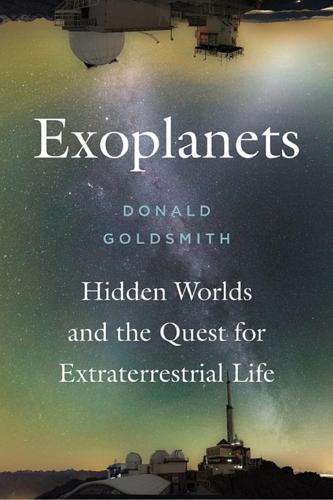
Exoplanets: Hidden Worlds and the Quest for Extraterrestrial Life
by
Donald Goldsmith
Published 9 Sep 2018
Modern investigations, most notably by the Juno spacecraft now in orbit around Jupiter, change this picture somewhat by suggesting that the planet has a “fuzzy core” that could have a radius half as large as Jupiter’s, containing large amounts of water, ice, and frozen methane along with rocky minerals similar to Earth’s.3 Outside the orbit of Neptune we find the most pristine members of the solar system, those least affected by the 4.5 billion years of recent history, continuing to orbit along their frigid paths around the sun. Collectively these objects form the “Kuiper belt,” named after the Dutch-American astronomer Gerard Kuiper, who first deduced their existence. Many billion comets, balls of rock and ice (in the astronomical sense), measuring a few or a few dozen kilometers across, orbit in this distant darkness; so, too, do Pluto, Eris, Makemake, Quaoar, and other small rocky worlds, most of which, we may reasonably speculate, remain to be discovered.
…
See Exoplanets Extrasolar Planets Encyclopedia, 73 Extraterrestrial life, 4, 7, 14, 88, 157–65, 173 Extremely Large Telescope, 194, 197–98, 201 Fischer, Debra, 37, 48–49 Flares solar, 167 stellar, 31, 56, 123, 169–79, 189 Fomalhaut, 106 Fulton, Benjamin, 129, 131 Gaia spacecraft, 21, 142, 159, 183–85 Gamma Cephei, 31 Ganymede, 122 Gas giant planets, 40, 67–68, 72, 98–99, 115, 138, 140, 145–47, 151 Gaudi, Scott, 1, 78, 109–10 Gemini Planet Imager, 72 Gemini telescopes, 72, 105 Giant Magellan Telescope (GMT), 196 GJ 1132 b, 107–8 Goddard Space Flight Center, 174, 180 Gran Telescopio Canarias, 195 Gravitational bending of space, 74–76, 205 Gravitational force, 8, 10, 16, 19–22, 26, 31, 37–46, 58–59, 64, 67, 74–85, 92, 96, 100, 109, 112–13, 122, 127, 137–41, 146–52, 164, 166, 185, 220 Gravitational microlensing, 59, 78–83, 127–28, 166–67, 188 HabEx (Habitable Exoplanet imaging mission), 193–94 Habitable zone, 45–46, 111, 161–64, 172 HARPS (High Accuracy Radial-velocity Planet Searcher), 44, 111–12, 117, 170 Harvard University, 46, 52, 109, 157, 169 Hat Creek Observatory, 86 Hawaii, 47, 65, 95, 128, 198–99, 204 Hawking, Stephen, 212, 224 HD 3651, 37 HD 10180, 116–18 HD 176051, 20 HD 189733 b, 90 HD 209458, 52, 60, 103–6 HD 209458 b (Osiris), 103–7 Helium, 67, 101, 105, 130–33, 138, 140, 152–54, 186–87, 218 Helium-3, 218 Henderson, Calen, 80 HIP 65426, 73 Hot Jupiters, 41, 63, 90, 104, 109–10, 127, 145–46, 186 Howard, Andrew, 47, 49 HR 8799, 72, 106 HR 8832, 116–18 Huang, Su-Shu, 161 Hubble Space Telescope, 55, 70, 83–84, 106, 108, 111, 176–79, 182, 188, 193 Hydrocarbon, 165 Hydrogen, 67, 99, 106, 130–33, 137–40, 152–53, 164–65, 185, 187 Ice, 137–38, 165 Ice line, 137 Infrared radiation, 8, 12–13, 43, 56, 64–72, 94, 104–8, 142, 172, 177–83, 198–99, 204 Interferometer, 204 Interferometry, 199, 203–4 International Astronomical Union, 26 Iron, 88, 108, 112, 137, 153, 164–65, 198, 215, 220 James Webb Space Telescope, 122, 171, 176 Jupiter, 15–22, 27–30, 33–34, 38–41, 58–59, 63, 68–73, 90, 98, 102, 104, 107–11, 116, 119, 122, 127–30, 137, 142, 145–50, 155, 164, 166, 182–86 Jurgenson, Colby, 48 K2 spacecraft mission, 61–63, 80, 123, 187 Keck Observatory, 48, 72, 95, 125, 195–97, 204 Keck Planetary Finder, 47–48, 203 KELT (Kilodegree Extremely Little Telescope), 108–11 KELT 9 b, 110 Kepler, Johannes, 37, 51 Kepler 10 b, 95 Kepler 11, 113–16 Kepler 11 b–g, 114 Kepler 16 b (Tatooine), 96 Kepler 22 b, 97–99 Kepler 36, 99–101 Kepler 36 b, 100–101 Kepler 36 c, 100–101 Kepler 70 b, 87–88, 110 Kepler 90, 116–17 Kepler 452, 101–2 Kepler mission, 51–63, 80, 86–105, 109–10, 113–17, 125, 127–32, 154–55, 166–67 Kepler Prime, 62–63 Kepler Space Telescope. See Kepler mission Kfir, Sagi, 223 KIC 8462852, 92 Kipping, David, 131 KOI-1843 b, 41 Kuiper, Gerard, 138 Kuiper belt, 138 Land, Edwin, 89 Las Campanas Observatory, 196 Lasers, 70, 208–13 La Silla Observatory, 44, 46, 58, 123 Latham, David, 52, 109–10 Le Gentil, Guillaume, 53 LHS 1140 b, 111–12 Life, extraterrestrial, 4, 6–7, 90, 98, 102, 111, 124, 156–75, 191–94, 199, 206–7, 210–13, 216–19, 222 Light year, 11–12, 68, 208, 214 Lissauer, Jack, 1, 139 Loeb, Avi, 157, 169 Lowell, Percival, 47–48 Lowell Observatory, 47–48 Lubin, Philip, 209–12 Lucretius, 5–6 Luminosity, 43–44, 82, 93, 101–13, 117–19, 152, 163, 169, 172, 185, 207 Luni-solar tides, 148–49 LUVOIR (Large UV / Optical InfraRed surveyor), 193–94 Macintosh, Bruce, 154 Magellanic Clouds, 143 Magnesium, 137, 219–20 Magnetic fields, 24–25, 150–51, 158, 168 Makemake, 138 Mars, 47, 49, 54, 98, 116, 124, 137, 140–41, 160–65, 189, 205, 212, 218, 220, 224 Mass of exoplanets, 18, 31–32, 41, 46, 51–62, 70–72, 89–94, 100, 108–12, 116, 124–34, 137–42, 145–47, 150–58, 162–65, 178, 187, 192, 200 of stars, 31–32, 79, 81 Mast, Jerry, 195 Mauna Kea Observatory, 45, 67, 72, 94, 195, 198–99, 204 Max Planck Institute for Astronomy, 108 Mayor, Michel, 32 MEarth, 46, 107, 111 Mercury, 26, 40, 52–54, 96, 113, 115, 129, 133, 145, 149, 151 Metal, 58, 88, 99, 153–54, 177, 219–20 Metallicity, 153 Meteorites, 136 Meteoroids, 124, 136, 159 Methane, 72, 106, 108, 137–38, 165, 172–73 Michelson, Albert, 204 Microlensing, 59, 78–83, 127–28, 166–67, 188 Milky Way, 6, 11–12, 16, 19, 25, 32, 45–47, 57, 62–63, 68, 76–81, 88, 118, 120, 130, 163, 184–88, 199, 208, 210 Millimeter radiation, 8, 142–44, 197 Millisecond pulsars, 26 Milner, Yuri, 212 Moon, 5, 15–16, 64, 75, 122, 128, 136–37, 148–49, 164, 176, 212, 218–21 Moons, exoplanetary, 16, 137, 140, 144, 165–66 Mount Wilson Observatory, 204 M Stars, 46, 111, 118–19, 163, 169–70, 207 Multiple planetary systems, 116, 132 Multiple star systems, 12, 68 NASA, 1, 51, 54, 61–62, 94, 105, 139, 165, 174–81, 188, 192, 203–4, 209, 212, 220 Neap tides, 149 Nelson, Jerry, 195 Neptune, 21–22, 43, 98, 101, 115, 128–33, 138, 144 Nereus, 219–20 Neutron stars, 24–26, 77 Newton, Isaac, 15, 37 Newton’s laws, 29, 38, 50 NGTS (Next Generation Transit Survey), 126 Nickel, 88, 219–20 Nitrogen, 153, 162 Nuclear fusion, 56, 67, 82–83, 99–100, 119–20, 137, 152, 218 OGLE-2011-BLG-0420Lb, 82 OGLE-2012-BLG-0026, 79 OGLE 2016-BLG-1195Lb, 80–82 Orbital brightness modulation, 85, 87, 90 Orbital resonance, 92, 127, 149 Osiris, 60, 103–7 Outer Space Treaty, 221–22 Oxygen, 137, 143, 153, 162, 172–73, 199, 219 P1257 + 12, 25–26 Palomar Observatory, 195, 204 Panspermia, 124 Paranal Observatory, 49, 73, 126, 197 Parsec, 11–12, 201 Peloton effect, 140 Perlmutter, Saul, 212 Phobetor, 26 Photons infrared, 8, 12–13, 43, 56, 64–72, 94, 104–8, 142, 172, 177–83, 198–99, 204 millimeter-wave, 8, 142–44, 197 radio, 23, 25, 27, 85–89, 94, 102, 142, 168, 202–3 synchrotron, 24–25 ultraviolet, 8, 43, 56, 110, 123–24, 169, 177–78 visible-light, 24–25, 55, 58, 76–79, 122, 182, 184, 189–90, 194, 209, 211–12, 215–16 x-ray, 8, 90, 167, 169–70 Planetesimals, 118, 139–41 Planet Nine, 21–23, 129 Planets, extrasolar.
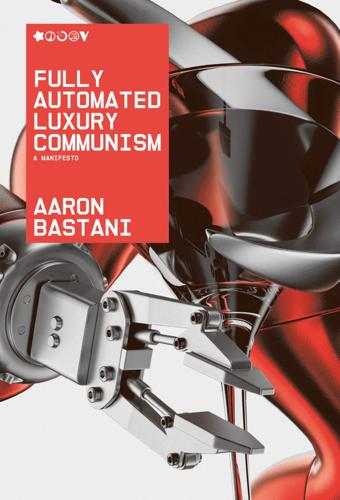
Fully Automated Luxury Communism
by
Aaron Bastani
Published 10 Jun 2019
Like the planets, asteroids orbit the sun, although few of them are purely spherical. The ones that are, such as Ceres, are often referred to as ‘dwarf planets’ as they are so large that their own gravitational mass has compressed them into a sphere. More generous estimates believe there may be 200 dwarf planets in the Kuiper belt of the outer solar system, as well as more than a million asteroids larger than a kilometre in diameter. In terms of medium-term prospecting, however, there is a more interesting group of objects that reside far closer to home. At present we know of more than 16,000 near-Earth asteroids (NEAs) ranging in size from one metre to more than thirty-two kilometres.
…
A., 225 HDV (Haringey Development Vehicle), 205 healthcare Britain and, 213–14 post-scarcity in, 138–58 in UK, 215–16 United States and, 213–14 Hegel, Georg Wilhelm Friedrich, 16 heme, 176–7 Henderson, Bruce, 46–7 Henderson Curve, 46–7 Hinkley Point C, 113 Hinton, Geoffrey, 91 history, in 2008, 20–1 Hobbes, Thomas, 139 Holt, William, 44–5 Horse Manure Crisis, 73, 134 Houdini 6, 81 Human Genome Project, 144–5, 146 human rights, centrality of, 193–4 hurricanes, 97–8 Huxley, Aldus, 19 IBM, 80 Ibn Khallikan, 40–2 IBRD (International Bank for Reconstruction and Development), 221 IDA (International Development Association), 221 IEA (International Energy Agency), 103, 105 ignorant people, 187–8 Illumina, 146 imitation, integration vs., 198 Impossible Foods, 175–7 India, 110, 166 Industrial Revolution, 33 industry, 32–6 inertia, measuring, 25–30 infectious diseases, 142–3 information about, 37–48 biology as, 39 food as, 164–8 Marx on, 49 post-capitalism and, 59–60 information goods, 63–5 information technology and robotics, 76 Institute for Global Prosperity at University College London, 214 integration, imitation vs., 198 internal energy insulation, 113 International Astronautical Congress, 119 International Bank for Energy Prosperity, 222 International Bank for Reconstruction and Development (IBRD), 221 International Development Association (IDA), 221 International Energy Agency (IEA), 100–1, 103, 105 International Renewable Energy Agency (IRENA), 103–4 International Rice Research Institute (IRRI), 166 internationalism, 197–200 internet bandwidth, 45–6 Interplanetary Transport System (ITS), 119, 120 IPCC, 101 IRENA (International Renewable Energy Agency), 103–4 IRRI (International Rice Research Institute), 166 Ishee, David, 9, 153–4 ITS (Interplanetary Transport System), 119, 120 Jain, Naveen, 127–8 Jameson, Fredric, 17n Japanese Space Agency, 131 JD.com, 89 Jennings, Ken, 80, 81 Jevons, William, 164, 167 Jevons Paradox, 164 Just Foods, 174, 178 Kalanick, Travis, 84 Kalecki, Michał, 230, 231 Kasparov, Garry, 80 Kennedy, Robert, 233 Keynes, John Maynard, 51, 56–9, 243 ‘KIVA’ robot, 89 Kodak, 40–2 Kranzberg, Melvin ‘Six Laws of Technology’, 237 Kuiper belt, 130 Kurdi, Alan, 156–7 Kuznets, Simon, 233 labour, when capital becomes, 69–71 Labour Party, 229 Łaski, Kazimierz From Marx to the Market, 230–1 LEDs, 242 Lehman Brothers, 21 Leia, 4–5 Lendlease, 205 Leninism, 196 Leontief, Wassily, 75–6 Letter on the Economic Possibilities of Our Grandchildren, 56–7 Lewicki, Chris, 132 Lewis, Clive, 207 life expectancy, 139–40, 142, 166 lithium, 117, 118 livestock farming, 169–70 ‘lost decade’, 26 Luther, Martin, 240–1 luxury populism electoralism and society, 194–6 against elite technocracy, 185–8 FALC and, 192–4 against globalism, 197–200 green politics and red politics, 188–92 towards internationalism, 197–200 Machiavelli, Niccolò Discorsi, 95 Madrid Protocol, 136 Malthus, Thomas, 167 An Essay on the Principle of Population, 163–4 market capitalism about, 197–8 emergence of, 39–40 market socialism, autonomy of publicly owned firms under, 231 Mars, 120 Martinelli, Luke, 226 Marx, Karl on capitalism, 16, 34–6, 35, 51, 54–5, 128, 199 The Communist Manifesto, 51–2 compared to Wycliffe, 241 Grundrisse, 51–2, 56–7, 61–3 on information, 49 on mode of production, 195 on production, 60 on technology, 237 May, Theresa, 29, 141, 206 McAfee, Andrew, 93 McCauley, Raymond, 146 McDonnell, John, 207 meat cultured, 170–5 synthetic, 168–70 from vegetables, 175–7 medicine, automation in, 91 meganucleases, 150 Memphis Meats, 172, 173 Mendel, Gregor, 149 migration, globalism and, 197 milk, cellular agriculture and, 177–9 Millennium Project, 87–8 minerals, 117–18, 134–7.

Accelerando
by
Stross, Charles
Published 22 Jan 2005
But I'm wondering about on-site intelligence. Once the comet gets more than a couple of light-minutes away –" "You can't control it. Feedback lag. So you want a crew, right?" "Yeah. But we can't send humans – way too expensive, besides it's a fifty-year run even if we build the factory on a chunk of short-period Kuiper belt ejecta. And I don't think we're up to coding the kind of AI that could control such a factory any time this decade. So what do you have in mind?" "Let me think." Pamela glares at Manfred for a while before he notices her: "Yeah?" "What's going on? What's this all about?" Franklin shrugs expansively, dreadlocks clattering: "Manfred's helping me explore the solution space to a manufacturing problem."
…
Gianni prods, pretending to ignore the frowns that Annette is casting his way. "And as for the time-binders," Manfred nods again, "they're like Sirhan. Deeply conservative, deeply suspicious. Holding out for staying here as long as possible, until the Vile Offspring come for Saturn – then moving out bit by bit, into the Kuiper belt. Colony habitats on snowballs half a light-year from anywhere." He shudders. "Spam in a fucking can with a light-hour walk to the nearest civilized company if your fellow inmates decide to reinvent Stalinism or Objectivism. No thanks! I know they've been muttering about quantum teleportation and stealing toys from the routers, but I'll believe it when I see it."
…
The two hard parts are getting at or to a router, and paying – that's going to mean traveling with someone who understands Economics 2.0 but doesn't want to hang around the Vile Offspring. "As it happens, these old acquaintances of mine went out and fetched back a router seed, for their own purposes. It's sitting about thirty light-hours away from here, out in the Kuiper belt. They're trying to hatch it right now. And I think Aineko might be willing to go with us and handle the trade negotiations." He raises the palm of his right hand and flips a bundle of tags into the shared spatial cache of the inner circle's memories. Lobsters. Decades ago, back in the dim wastelands of the depression-ridden naughty oughties, the uploaded lobsters had escaped.

Pale Blue Dot: A Vision of the Human Future in Space
by
Carl Sagan
Published 8 Sep 1997
But they are much bigger than the run-of-the-mill comets we know. They may be the vanguard of a vast array of small worlds that extends from the orbit of Pluto halfway to the nearest star. The innermost province of the Oort Comet Cloud, of which these new objects may be members, is called the Kuiper Belt, after my mentor Gerard Kuiper, who first suggested that it should exist. Short-period comets—like Halley's—arise in the Kuiper Belt, respond to gravitational tugs, sweep into the inner part of the Solar System, grow their tails, and grace our skies. Back in the late nineteenth century, these building blocks of worlds—then mere hypotheses—were called "planetesimals."

Five Billion Years of Solitude: The Search for Life Among the Stars
by
Lee Billings
Published 2 Oct 2013
It’s not like we have the option of not being destroyed by the Sun, and that’s probably why economists think a planetary valuation is a bit silly.” Laughlin shot a smiling glance my way. “But we do have an option. We can move the Earth.” A pregnant pause. “Move the Earth?” “Sure.” “Like, tow it out of the way?” “Essentially, yeah. We have more than enough time. Just take some large comets or asteroids from the Kuiper Belt and use them to tap and transfer some of Jupiter’s orbital energy and angular momentum to the Earth over a timescale of hundreds of millions of years. Each time one flew by the Earth, you’d get a small kick, and you’d expand the Earth’s orbit very gradually through those repeated close encounters.
…
acid runoff, 173, 175 Alienopoly, 260 Allegheny Plateau, 124–28 Allen, Paul, 12 Allen Telescope Array (ATA), 12–14, 41, 42 Alpha Centauri, 36, 52, 73, 232, 234 search for planet near, 94–98 simulations of planetary assembly in, 96, 97 American Astronomical Society, 194 Americas, 21–22 anaerobes, 129, 140, 142, 143, 169 Anaximander, 78 Anderson, Eric, 258 Andromeda Galaxy, 31, 191, 238 Anglada-Escudé, Guillem, 64–69 anthracite coal, 125, 131, 134, 136, 137, 144, 160, 184 Anthropocene era, 135–37, 145, 146 anti-gravity devices, 100 Apollo program, 1, 50, 151, 187, 202, 212, 239 Archean Eon, 139–40, 141, 169, 171, 184, 200 Arecibo Observatory, 39–42 Ares V, 203 Aristarchus, 79–81, 86 Aristotle, 78–79, 82 Arthur, Janice, 121–23 Arthur, Mike, 121–24, 127–30, 136–38 Asimov, Isaac, 152 asteroids, 3, 19, 76, 110, 140, 154, 258 Earth struck by, 30 astrobiology, 15, 153, 169, 231 astronomy, 4, 33, 48, 111, 190 Copernican Principle (principle of mediocrity) in, 83, 89, 91 golden age of, 192 modern, beginning of, 82 see also cosmology Astrophysical Journal Letters, 67 Atchley, Dana, 15 Atlantis, 185–87 ATLAST (Advanced Technology Large-Aperture Space Telescope), 198, 203, 230 atomic weapons, 23–24 atoms, 43, 79–81, 248 Automated Planet Finder (APF), 61, 70, 114 Bahcall, John, 249, 251 Bains, William, 261 Barnard’s Star, 52 Baum, Frank, 11 Beichman, Charles, 221–22 Berner, Robert, 178 Big Bang, 89–91 biosignatures, 167–72, 261–62 black holes, 88–89, 191, 206 black shales, 123–26, 135, 137–38, 141 in Marcellus formation, 126–30, 137, 138, 141, 144, 160 Bode, Johann, 109 Bode’s law, 109–10 BoingBoing.net, 74 Bonfils, Xavier, 66–69 Bradbury, Ray, 98–99 Bryson, Bill, 144 Bush, George W., 196, 198, 215, 221–23 Butler, Paul, 55, 58–70, 96, 114 Caldeira, Ken, 181 California, 105–7, 112–13 gold rush in, 105–6, 111, 112–13 Calvin, Melvin, 15, 19–20, 25 Cambrian Period, 138–39, 143–45, 182 Cameron, James, 258 Campbell, Joseph, 261 Canada, 244–48 Canadian Shield, 246 Capella, 239 carbon, 123, 131, 132, 134, 135, 140, 141, 175, 179, 182 carbonate-silicate cycle, 175–81, 184 carbon cycle, organic, 175 carbon dioxide (CO2), 124, 132, 134–37, 140, 141, 157, 159–62, 168, 170, 172, 173, 175–82, 184 Carboniferous Period, 131, 132 Carina Nebula, 238 Carnegie Institution, 251 Carpenter, Scott, 100 Carter, Jimmy, 240 Cash, Webster, 219–20 Cerro Tololo Inter-American Observatory, 96 Challenger, 3, 188–89 Chandra X-Ray Observatory, 192, 209 Chaotian Eon, 139 Charbonneau, David, 228–30, 232 charged-coupled devices (CCDs), 51–53 China, 21–22 chlorofluorocarbons, 134, 142 chlorophyll, 141, 143 Christmas Tree Cluster, 238 Clinton, Bill, 196, 215 clouds, 161–62, 164, 206 coal, 125, 131, 134, 136, 137, 144, 160, 184 Columbia, 189, 196 comets, 2, 3, 19, 76–77, 140 Halley’s, 3 Compton Gamma Ray Observatory, 192, 209 computers, 43–44 Constellation program, 196, 198, 203, 204, 215, 221, 223 convergent evolution, 21 Cook, James, 85–86 Copernican Principle (principle of mediocrity), 83, 89, 91 Copernicus, Nicolaus, 81–83, 86, 87, 89, 91, 200 Cornell University, 39, 42 coronagraphic TPF, 217–22, 224, 231, 249 coronagraphs, 217 cosmology, 77–82 Copernican Principle (principle of mediocrity) in, 83, 89, 91 inflationary theory in, 89–92 modern, 86–87, 91 see also astronomy Cosmos, 240 Costanza, Robert, 74–75 Crab Nebula, 30 Crabtree, William, 84 Crutzen, Paul, 134–35 Cuban missile crisis, 23–24 cyanobacteria, 140–44, 175, 183 Daily Mail, 74 dark energy, 88, 90 dark matter, 206 Darwin, Charles, 200 Davidson, George, 113 deep time, 145–46 Democritus, 79, 80, 92, 238 Demory, Brice, 259 De Rerum Natura (On the Nature of Things) (Lucretius), 80–81 De Revolutionibus Orbium Coelestium (On the Revolutions of Heavenly Orbs) (Copernicus), 82 Devonian Period, 128, 130–32 Diamandis, Peter, 258 dinosaurs, 30, 136, 144 Discovery, 189 DNA, 40, 141, 143, 170 dolphins, 16, 20–21 Drake, Frank, 9–17, 27–45, 101, 167–68, 240 Arecibo transmission of, 39–41 orchids of, 37–38 Drake equation, 16–25, 28–29, 38–39, 41, 42, 183 longevity of technological civilizations (L term) in, 22–25, 38–39, 41, 42 Draper Laboratory, 256 Dyson, Freeman, 104 Dyson spheres, 104, 105 Earth, 109 asteroid strike on, 30 atmosphere of, 3, 132, 134–35, 139, 140, 144, 157–60, 168–69, 174–77, 206, 238 “Blue Marble” images of, 212, 239–41 carbonate-silicate cycle on, 175–81, 184 climate of, 123–24, 128, 132–37, 142, 144, 156–57, 160–62, 173–75, 184 in early cosmology, 77–82 energy consumption on, 103–4 extinctions on, 43, 135, 184 faint young Sun problem and, 173–75 formation of, 2, 7, 20, 139, 173 geologic time periods of, 128–45 glaciation on, 132–34, 142, 174, 176, 178, 179, 183 human population of, 43, 100, 134, 136 ice caps of, 128, 132–33, 135, 136, 184 Laughlin’s idea for moving orbit of, 76–77 Laughlin’s valuation of, 73–76 oxygen on, 139–44, 159, 171, 180–82, 200, 238 Snowball Earth events, 142, 174, 179 Sun’s distance from, 83, 86 tectonic plates of, 30, 105, 111, 128, 140, 144, 176, 229 union of organisms with geophysical systems on (Gaia hypothesis), 175, 176, 178, 183 water on, 3, 30, 158–61, 174, 177–80, 182 Earth, life on, 31, 154 diversification and explosion of, 138–39, 143, 144, 182 emergence of, 4, 7, 19–20, 238 end of, 7–8, 31–32, 75–77, 159, 180–83 essential facts of, 29–30 humanity’s ascent, 144–46 intelligent, 20–21, 182–83 jump from single-celled to multicellular, 28 redox reactions and, 168 Earth-like planets, 29, 32–34, 71–72, 99, 227–28 Earth-size or Earth-mass planets, 6, 53–54, 56, 200, 227, 251 ecology and economics, 74 economic growth, 102, 103 Eddington, Arthur, 35 Edison, Thomas, 106 Einstein, Albert, 35, 87 Elachi, Charles, 211–12, 214, 221 electricity, 103, 136 Emerson, Ralph Waldo, 254 Endeavour, 190 endosymbiosis, 143 energy, 103–4, 136–38 from fossil fuels, 103, 124–27, 137, 154, 160, 184 Engelder, Terry, 126 Epicurus, 80 Epsilon Eridani, 10–11 Eshleman, Von, 35 ethanol, 137 eukaryotes, 143, 144 European Southern Observatory (ESO), 60, 64, 66 European Space Agency, 222 evolution, 183 convergent, 21 of universe, 88–89 exoplanetology, 13, 14, 34, 51, 193 exoplanets, 5, 27–28, 87, 222–23, 263 51 Pegasi b, 50, 53, 54, 58–59 Alpha Centauri Bb, 98–99 biosignatures and, 167–72, 261–62 Blue Marble images of, 212–15 distinguishing between various compositions of, 251 Earth-like, 29, 32–34, 71–72, 99, 227–28 Earth-size or Earth-mass, 6, 53–54, 56, 200, 227, 251 formation of, 109 GJ 667Cc, 65–69, 72 Gliese 581c, 163 Gliese 581d, 163 Gliese 581g (Zarmina’s World), 63–64, 68, 69, 72, 163 Gliese 876b, 60 habitability of, 154–83 HD 85512b, 163–64 Jupiter-like, 13, 28, 50, 56, 59, 60, 108, 109, 226, 228, 248–49 Laughlin’s valuation of, 71–77 migration theory and, 108 Neptune-like, 56, 108–9, 251 “Next 40 Years” conference on, 225–35, 263 observation of stars of, 33 snow line idea and, 110 super-Earths, 228–29, 251, 262 transits of, 53 TrES-4, 228 exoplanet searches, 5–7, 13–14, 32–33, 69–70 and false-alarm discoveries, 52–53 press releases on progress in, 163–65 SETI and, see SETI spectroscopy in, see spectroscopy, spectrometers see also telescopes Ferguson, Chris, 185–86 financial markets, 111–12 Fischer, Debra, 59, 61, 62, 69, 96 Ford, Eric, 249–50 Ford, Henry, 125 fossil fuels, 103, 124–27, 137, 154, 160, 184 fracking (hydraulic fracturing), 126–27 Gaia hypothesis, 175, 176, 178, 183 galactic planetary census, 54 galaxies, 87, 88, 99, 238 Andromeda, 31, 191, 238 Hubble Telescope and, 191 Local Group of, 88 Milky Way, see Milky Way Galileo, 241–42 Galileo Galilei, 81–83, 210 Galliher, Scot, 257 Garrels, Robert, 178 gas, natural, 125–27, 137, 184 Gemini telescopes, 199–200, 203 General Dynamics Astronautics time capsule, 100–103 geologic time periods, 128–45 geology, 110–11, 123 glaciers, 132–34, 142, 174, 176, 178, 179, 183 Glenn, John, 100 Goldin, Dan, 194, 211, 215, 242 governments, Urey on, 102 gravitational lenses, 35–37 Great Observatories, 192, 197, 209 Greece, ancient, 77, 92, 238 Green Bank conference, 15–25, 27–28, 101, 167–68, 240 greenhouse gases, 124, 134, 137, 157, 160, 174, 175 carbon dioxide, see carbon dioxide methane, 140, 142, 168–71, 174, 200 Grunsfeld, John, 197–99, 225–26, 235 Guedes, Javiera, 96 Gund Institute for Ecological Economics, 74–75 “Habitable Zones around Main Sequence Stars” (Kasting), 155–56, 159 Hadean Eon, 139–40, 156 Halley, Edmond, 84 Halley’s comet, 3 Hart, Michael, 174, 178 Hays, Paul, 176–79 heliocentrism, 79–82 Hiroshima, 23 Holmes, Dyer Brainerd, 100–101 Holocene Epoch, 133–35, 145 Horrocks, Jeremiah, 84 Howard, Andrew, 62 How to Find a Habitable Planet (Kasting), 167 Hu, Renyu, 259 Huang, Su-Shu, 15, 19 Hubble, Edwin, 86–87 Hubble Space Telescope, 189–93, 195, 197–99, 205–7, 209, 218–19, 226 human genome project, 234 hydraulic fracturing (fracking), 126–27 hydrogen, 159, 170–72 Icarus, 155 ice ages, 132, 133, 142–43 Industrial Revolution, 22, 134 inflationary theory, 89–92 Ingersoll, Andrew, 159 intelligence, 20–21, 23, 32, 182–83 interferometry, 213–14, 216, 231 International Space Station (ISS), 187, 189, 197, 202, 207–8, 210 interstellar travel, 44–45, 100–101 iron, 141 James Webb Space Telescope (JWST), 193–99, 202–4, 209, 215, 216, 218, 220, 225, 262 Jensen-Clem, Becky, 259 Jet Propulsion Laboratory (JPL), 211–12, 216, 219, 221–25, 231 Johnson, Lyndon B., 101 Journal of Geophysical Research, 178 Jupiter, 76, 109, 191, 239 Galileo’s study of, 81 Kepler’s laws and, 83 moons of, 28, 110 Jupiter-like planets, 13, 28, 50, 56, 59, 60, 108, 109, 226, 228, 248–49 Kasdin, Jeremy, 219–20 Kasting, Jerry, 150–52 Kasting, Jim, 150–67, 169–84 children of, 153 Kasting, Sandy, 150 Kasting, Sharon, 153 Keck Observatory, 59, 60, 62, 66, 118 Kennedy, John F., 224 Kennedy Space Center, 185 Kepler, Johannes, 82, 83 planetary motion laws of, 82–84 Kepler field stars, 41 Kepler Space Telescope, 13–14, 53–54, 56, 62, 71–73, 98, 108–9, 166, 201, 225, 229–30, 263 Kirschvink, Joseph, 142 Knapp, Mary, 259 Korolev, Sergei, 186 Kuchner, Marc, 217–18 Kuiper Belt, 76 Large Magellanic Cloud, 238 Lasaga, Antonio, 178 Late Heavy Bombardment, 3, 140 Laughlin, Greg, 5–6, 48–50, 53–57, 69–70, 93–100, 107–12, 114–15, 117–20 Alpha Centauri planet search and, 94–98 idea to move Earth, 76–77 magnetic toy of, 93–94 SETI as viewed by, 99 valuation equation of, 71–77 laws of nature, 155–56 Lederberg, Joshua, 15, 16, 167–68 Le Gentil, Guillaume, 85, 117 Leinbach, Mike, 185–86 Lick, James, 112–14 Lick Observatory, 58, 61, 62, 70, 113–19 life, 32 on Earth, see Earth, life on intelligent, 23, 32 single-celled, 20 technological, see technological civilizations light: photons of, 72, 89, 115–16, 156, 191, 193–94, 201, 202, 213, 216, 237–38 polarization of, 115–16 waves of, 213–14, 216 Lilly, John, 15–16, 20–21 Local Group, 88 Lovelock, James, 168, 170, 174–76, 178, 181–83 Lucretius, 80–81 Lyot, Bernard, 217 Madwoman of Chaillot, The, 36 Manhattan Project, 23 Marcellus Center for Outreach and Research, 127, 149 Marcellus formation, 126–30, 137, 138, 141, 144, 160 Marconi, Guglielmo, 48 Marconi Conference Center, 48–50, 53–57 Marcy, Geoff, 57–63, 69, 70, 114, 194, 230–32, 235 Margulis, Lynn, 175 Mars, 19, 50, 87, 100, 107, 109, 155, 167, 179, 191, 192, 239 Kepler’s study of, 82, 83 missions to, 187, 188, 196, 207, 221 water on, 28, 179 Marshall, James, 105–6, 112 Martian Chronicles, The (Bradbury), 98–99 Massachusetts Institute of Technology (MIT), 251–52, 259 ExoplanetSat project, 256–57 “Next 40 Years of Exoplanets” conference at, 225–35, 263 Mayor, Michel, 58 McPhee, John, 145 mEarth Project, 228–29 mediocrity, principle of (Copernican Principle), 83, 89, 91 Mercury, 82, 109, 239 meteorites, 20 methane, 140, 142, 168–71, 174, 200 methanogens, 140, 142, 169 microbes, 28 Miletus, 77 Milky Way, 16–17, 25, 31, 39, 41, 79, 86–87, 191, 237, 238 Sun’s orbit in, 95 Miller, George P., 101 Miller, Stanley, 19 Miller Institute for Basic Research in Science, 48, 74 mitochondria, 143 Moon, 3, 76, 100, 229, 242 in early cosmology, 78, 83 formation of, 30, 139 Moon, missions to, 188, 196, 221, 224 Apollo, 1, 50, 151, 187, 202, 212, 239 Morrison, Philip, 15, 18–19, 21, 23–24 Mosely, T.
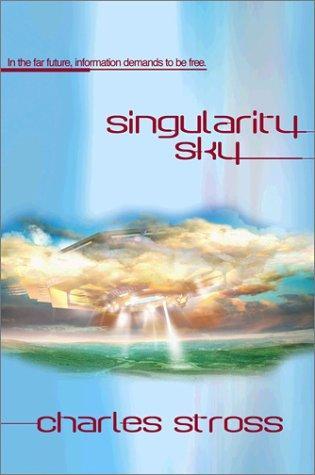
Singularity Sky
by
Stross, Charles
Published 28 Oct 2003
Just good old-fashioned fission bombs, jacketed with a high-explosive shaped charge and a lens of pre-fragmented copper needles—shrapnel that, in a vacuum engagement, would come spalling off the nuclear fireball in a highly directional cone, traveling at a high fraction of Hghtspeed. The next thirty minutes passed in tense silence, broken only by terse observations from Radar One and Two. No more targets burst from hiding; there might well be others in the Kuiper belt, but none were close enough to see or be seen by the intense lidar pulses of the warship. In that time, passive sensors logged two nuclear detonations within a range of half a light-hour; someone was definitely shooting. And behind them, the telltale disturbances of six big ships emerged from jump, then powered up their combat lidar and moved out.
…
Nevertheless, they signaled the squadron astern; and behind them, one of the elderly battleships peeled off to pick up any survivors from the disastrous attack. The big picture, when it finally gelled some eight hours later, was very bad indeed. The "missile carriers" were actually refinery tugs, tending the migratory robot factories that slowly trawled the Kuiper-belt bodies, extracting helium 3 from the snowballs. Their sudden burst of speed had a simple explanation; seeing alien warships, they had panicked, dumping their cargo pods so that they could clear the area under maximum acceleration. One of the distant explosions had been the Kamchatka, landing a near miss on one of the "enemy battleships"—the cruiser India.
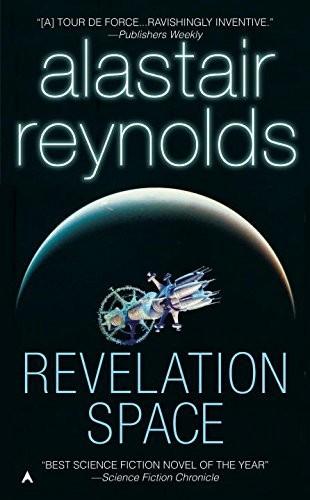
Revelation Space
by
Alastair Reynolds
Published 1 Jan 2000
They were spacedwellers to be sure, but they did not crew interstellar ships and so their outlook was very different to the wraithlike Ultras, with their dreadlocks and old-fashioned expressions. There were others still. Icecombers were a Skyjack offshoot; psychomodified for the extreme solitude which came from working the Kuiper belt zones, and they kept themselves to themselves with ferocious dedication. Gillies were aquatically modified humans who breathed liquid air; capable of crewing short-range, high-gee ships: they constituted a sizeable fraction of the system's police force. Some gillies were so incapable of normal respiration and locomotion that they had to move around in huge robotic fishtanks when not on duty.
…
Delta Pavonis was a chip of warm-red ambergris fixed at the middle, the system's eleven major planets spaced around it on their respective orbits, positioned at their true positions; smears of asteroidal debris and comet-shards following their own ellipses; the whole orrery haloed by a tenuous Kuiper belt of icy flotsam; tugged into slight asymmetry by the presence of the neutron star which was Pavonis's dark twin. The picture was a simulation, rather than an enlargement of what lay ahead. The ship's sensors were acute enough to glean data at this range, but the view would have been distorted by relativistic effects, and — worse — would have been a snapshot of the system as it was years earlier, with the relative positions of the planets bearing no resemblance to the present situation.
…
Because the scale adopted was large, the terrestrial planets — Resurgam included — were crammed into the middle; a tight scribble of concentric orbits banded around the star Delta Pavonis. The minor planets came next, followed by the gas giants and comets, occupying the system's middle ground. Then came two smaller sub-Jovian gas worlds, hardly giants at all, then a Plutonian world — not much more than a captured cometary husk, with two attendant moons. The system's Kuiper belt of primordial cometary matter was visible in infrared as a curiously distorted shoal, one nubby end pointing out from the star. And then there was nothing at all for twenty further AU, more than ten light-hours out from the star itself. Matter here — such as there was — was only weakly bound to the star; it felt its gravitational field, but orbits here were centuries long and easily disrupted by encounters with other bodies.

Dawn of the New Everything: Encounters With Reality and Virtual Reality
by
Jaron Lanier
Published 21 Nov 2017
An example of my 1980s usage of the term “mixed reality” is found in “Virtual Reality: An Interview with Jaron Lanier” (Kevin Kelly, Adam Heilbrun, and Barbara Stacks, Whole Earth Review. Fall 1989, no. 64, p. 108[12]). Chapter 2 1. I have no sympathy for the recent campaign to demote Pluto to prominent Kuiper Belt object instead of planet. Its weird orbit out there is an inspiration to every kid who doesn’t fit in. Are we not full-fledged planets? Will you only accept us if we conform? Let Pluto remain a planet, now and forever! If you planet demoters want to campaign to make folk categorizations of our world more rigorous, why don’t you insist that Europe isn’t a continent?
…
VR and avatar and robots doing work of as source of value specialness of working with real Human Use of Human Beings, The (Wiener) Huxley, Aldous Hyneman, Jamie hypercubes hypertext hypnosis IBM Iconic Mathematics (Bricken) icons icosahedrons idealism II Cybernetic Frontiers (Brand) illusions improvisation Inception (film) India industrial applications infinity, perception of information biasing of “free” vs. traceable to origin Information Age inner life input Inside Out (film) interactive screen technology interactivity Internet Gore and extremism on flaws in design of interpreters inversion inversion of human body investigative journalists invisible hand iPhone Ito, Teiji Izadi, Shahram Jackson, Michael Jacobson, Linda Japan Jaws (film) jazz Jeopardy (TV show) jobs Jobs, Steve Johnson, Lyndon B. Joy, Bill juggling Kalman filter Kapor, Mitch karate Kay, Alan Kelly, Kevin Kemp, Jack Khan, Ali Akbar Kickstarter Kim, David Kim, Scott Kinect Kinect Hacks King, Stephen kitchen design Klein Bottle Knitting Factory Knuth, Don Kollin, Joel Kotik, Gordy Krueger, Myron Kuiper Belt Kurzweil, Ray Kyoto Prize LaBerge, Stephen Langer, Susanne language translation Lanier, Ellery (father) death of death of Lilly and dome and mysticism and PhD studies and science writing and teaching career and Lanier, first wife divorce from Lanier, Lena Lanier, Lilibell (daughter,) Lanier, Lilly (mother) death of laser procedure on retina lasers Lasko, Ann latency Lawnmower Man, The (film) Learning Company Leary, Timothy Lectiones Mathematicae LEEP Lennon, John Lennon, Sean Leonard, Brett Levitt, David Levy, Steven libertarians licensing light pen lightweight optics limerence links, one- vs. two-way Linn, Roger LISP Lissajous patterns “Little Albert” experiment lobster avatar Los Alamos Los Angeles LSD Lucas, George lucid dreaming Lumière brothers Macedonians machine learning “Machine Stops, The” (Forster) machine vision Macintosh computers operating system MacIntyre, Blair Macromedia Macromind magazine stands magic magical thinking magicians magic window magnetic fields malware Manchurian Candidate, The (film) Mandala mapping marijuana markets Mars Marxism mass media Mateevitsi, Victor mathematics video games and Mathews, Max Matrix films Matsushita Mattel MAX design tool MAX visual programming tool McDowall, Ian McFerrin, Bobby McGreevy, Mike McGrew, Dale McLuhan, Marshall McLuhan ramp McMillen, Keith MDMA (Ecstasy) measurement medicine.

The Mission: A True Story
by
David W. Brown
Published 26 Jan 2021
In March 2006—a year before the Quad Studies started—fifteen hundred scholars from across the country and around the world gathered to present papers, network, give talks, and organize working groups.281 Even NASA’s science leadership at headquarters attended annually to face the community in a town hall session. On the first day of the conference, as was tradition, an influential scientist would give a keynote address called the Masursky Lecture—a sort of master class on some science, celestial event, or pressing planetary issue. Topics tended to trend along the lines of “Kuiper Belt Binaries: A New Window on Runaway Accretion” or “Mercury as an Object Lesson on Approaches to Planetary Exploration.”282 In 2006 the Lunar and Planetary Institute, which sponsored the conference, asked Professor Lunine to deliver the keynote. Jonathan’s talk was titled “Beyond the Asteroid Belt: Where to Go Next in the Outer Solar System, and Why.”283 He did not intend for his talk to be controversial.
…
Which translated from the Chippewa language more literally as “this is a valley,” but I mean it’s not like any Chippewa lived in California, so who would know? Pasadena, California it was. 16.S. O’Keefe, telephone interview by author, May 31, 2017. 17.National Aeronautics and Space Administration (abbreviated NASA from this point forward), “New Horizons—The First Mission to Pluto and the Kuiper Belt: Exploring Frontier Worlds,” press kit, January 2006, https://www.nasa.gov/pdf/139889main_PressKit12_05.pdf. 18.R. Taylor, Prometheus Project Final Report (982-R120461) (Pasadena, CA: NASA, Jet Propulsion Laboratory, California Institute of Technology [abbreviated JPL, CIT from this point forward], October 1, 2005), 112, https://trs.jpl.nasa.gov/bitstream/handle/2014/38185/05-3441.pdf?

Global Catastrophic Risks
by
Nick Bostrom
and
Milan M. Cirkovic
Published 2 Jul 2008
For instance, one recently well-studied case is the system of the famous nearby Sun-like star Tau Ceti which contains both planets and a massive debris disc, analogous to the Solar System Kuiper Belt. Modelling of Tau Ceti's dust disc observations indicate, however, that the mass of the colliding bodies up to 10 km in size may total around 1 . 2 Earth-masses, compared with 0.1 Earth-masses estimated to be in the Solar System's Kuiper Belt (Greaves et al., 2004) . Thus, Tau Ceti's dust disc may have around ten times more cometary and asteroidal material than is currently found in the Solar System - in spite of the fact that Tau Ceti seems to be about twice as old as the Sun (and it is conventionally expected for the amount of such material to decrease with time).
…
The Flamingo's Smile: Reflections in Natural History, pp. 403-41 3 (New York: W. W. Norton & Gould, S.J. ( 1 987). S ET! and the Wisdom of Casey Stengel. In Company). Greaves, J . S . , Wyatt, M.C., Holland, W.S., and Dent, W.R.F. (2004). The debris disc around r Ceti: a massive analogue to the Kuiper Belt. MNRAS, 3 5 1 , LS4-LS8. Grinspoon, D. (2003). Lonely Planets: The Natural Philosophy of Alien Life (New York: HarperCollins). Hanson, R. ( 1 999). Great Filter. Preprint at http:/ fhanson.berkeley.edufgreatfilter.htrnl Hanson, R. (200 1 ) . How to live in a simulation. ]. Evol. Techno!., 7, http:/ f www. jetpress.orgjvolume7 jsimulation.html Hunt, G.
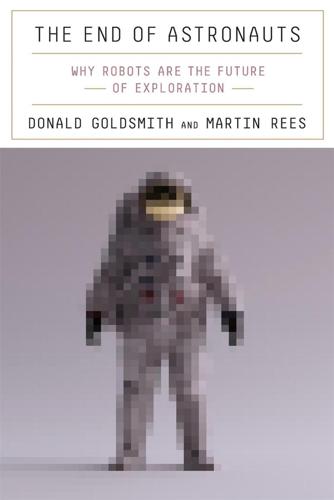
The End of Astronauts: Why Robots Are the Future of Exploration
by
Donald Goldsmith
and
Martin Rees
Published 18 Apr 2022
Only seven countries have ratified the agreement, while a dozen more have “acceded.” Neither category includes a likely participant in lunar exploration. The Moon Treaty also deals with the “other celestial bodies” of its title. Its terms apply to Mars, the asteroids, the giant planets and their moons, and interloping comets and Kuiper belt objects that orbit beyond Neptune; it exempts only the Earth and objects that strike the Earth as a result of natural causes. Imposing the United Nations Charter as the international law applicable to activities on other worlds, the treaty follows its promotion of activities benefiting humankind by allowing nations to collect lunar samples, to establish crewed or uncrewed lunar bases, and to move freely over or even under the moon’s surface.

The Year's Best Science Fiction: Twenty-Sixth Annual Collection
by
Gardner Dozois
Published 23 Jun 2009
Here she tells the storyof a woman who is forced to leave behind everything she knows, and is thrust, quite literally, into the unknown. Do you want to dream?” “No.” The woman in uniform behind the desk looked at her screen and then looked at me, expressionless. I didn’t know if she was real and far away; or fake and here. “Straight to orientation then.” II I walked. The Kuiper Belt Station—commonly known as the Panhandle—could afford the energy fake gravity requires. It wasn’t going anywhere; it was spinning on the moving spot of a minimum-collision orbit, close to six billion kilometres from the sun: a prison isle without a native population. From here I would be transported to my final exile from the United States of Earth, as an algorithm, a string of 0s and 1s.
…
Our fate: to be pole-axed and buried in the mud where the bridge of dreams will be built. I wondered when ‘orientation’ would begin. The cold of deep space penetrated my thin quilt. The steady shift of the clock numerals was oddly comforting, like a heartbeat. I watched them until at some point I fell asleep. III The Kuiper Belt Station had been planned as the hub of an international deep space city. Later, after that project had been abandoned and before the Buonarotti Device became practicable for mass exits like this one, it’d been an R&R resort for asteroid miners. They’d dock their little rocket ships and party, escaping from utter solitude to get crazy drunk and murder each other, according to the legends.
…
These are consistent with a large numbers of bodies decelerating from relativistic flight.’ Consternation. Voices shouting. Questions questions questions. Suguntung held up a hand and there was quiet. ‘On answer to your questions, somewhere in the region of thirty-eight thousand objects. We estimate them at a range of seventy astronomical units beyond the edge of the Kuiper belt, decelerating to ten percent light-speed for system transition.’ ‘Ninety-three hours until they reach us,’ Torben said. The numbers, the coloured numbers, so beautiful, so distant. ‘Yes,’ said Suguntung. ‘Who are they?’ Belej asked. ‘I know,’ Torben said. ‘Your enemy.’ ‘We believe so,’ Suguntung answered.
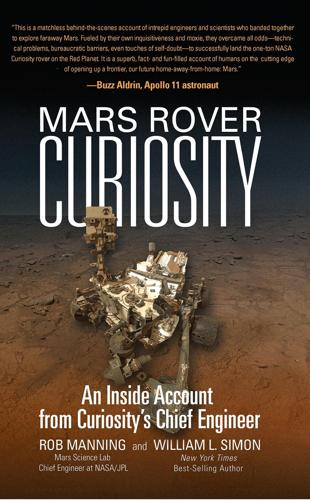
Mars Rover Curiosity: An Inside Account From Curiosity's Chief Engineer
by
Rob Manning
and
William L. Simon
Published 20 Oct 2014
Would he continue the support for MSL and the other JPL projects, or would he campaign with NASA Administrator Mike Griffin to shift focus and spend the money on projects perhaps nearer to his own heart and scientific goals? Stern came with impressive credentials. Holding a PhD in astrophysics and planetary science, he had pursued research involving arcane topics with mysterious-sounding names like the Kuiper belt and the Oort cloud, as well as solar systems around other stars. He had been principal investigator on a number of projects with tongue-twisting names like the “ALICE UV Spectrometer for the ESA/Rosetta comet orbiter.” We found out Stern’s priorities in short order. He made it clear he was not happy that his predecessors had signed up for an MSL budget of over $1 billion.
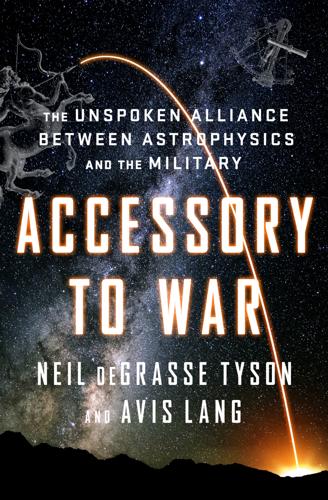
Accessory to War: The Unspoken Alliance Between Astrophysics and the Military
by
Neil Degrasse Tyson
and
Avis Lang
Published 10 Sep 2018
It’s a simple yet potent means to discover changes from one moment in time to another. Astrophysical discoveries generated by such comparisons include fleeting supernovas in the distant universe; Barnard’s Star, the fastest moving star seen in Earth’s sky; Pluto, the first object found in what would later be called the Kuiper Belt; salty water oozing down the inner wall of an impact crater on Mars; and the rapid movement of stars at the center of the Milky Way, suggesting the presence of an otherwise undetected supermassive black hole. A few months after the end of Desert Storm, the French minister of defense declared, “Without allied intelligence in the war, we would have been almost blind.”
…
on arms control and cooperation, 284 assassination, 286 Cuban Missile Crisis, 492–93n inaugural address, 497–98n on landing a man on the Moon, 282, 320, 458n leadership theme, 323 Limited Nuclear Test Ban Treaty, 215 on mastery of space, 157 and militarization of space, 273–74, 281–82, 284 missile gap and 1960 election, 281, 496n peace and freedom themes, 282, 283 space budget, 281–82, 283, 320, 510n space power strategy, 319–20 space weapons program, 286 Kepler, Johannes, 49, 93, 110, 424n, 440n KEYHOLE satellites, 204–5, 228, 230, 343, 500n Khrushchev, Nikita, 281, 284, 492n, 496n, 497n, 506n KH-1 CORONA satellites, 204–5, 228, 500n KH-8 GAMBIT satellites, 205 KH-9 HEXAGON satellites, 205, 228–29, 230 KH-11 (Advanced) satellites, 205–6, 343 KH-11 KENNAN satellites, 204, 205, 343, 471n Killkan report, “Meeting the Threat of Surprise Attack,” 493–94n Kinetic Energy Antisatellite (KE-ASAT) interceptor, 258–59 kinetic-energy weapons, 240, 241 King’s College, New York, 112, 113 Kirchhoff, Gustav, 146–47 Kiska, evacuation by Japan, 189 Kitab al-Fawa’id fi usul al-bahr wa-l-qawa’id, 67, 431n Klebesadel, Ray, 217 Knights Templar, 80 Korolev, Sergei, 263–64, 266, 268, 286, 487n, 489n Krafft, Karl Ernst, 59, 60–61, 429n Krepon, Michael, 309, 310, 485n, 507n Kritzinger, H. H., 427–28n Kubrick, Stanley, 494n Kuiper Belt, 344 Kutzscher, Edgar, 476n Lacrosse satellite, 343 LaFeber, Walter, 303 Landsat, 343–44 Langley, Samuel P., 128, 148, 457n Laplace, Pierre-Simon, 456n Large Hadron Collider, Switzerland, 28 Lascaux, France, cave drawings, 420–21n laser-guided bombs, 332, 335, 342 laser guide stars, 154, 155 lasers acronym, 242 in airborne antimissile defense, 156, 253 Curiosity rover’s ChemCam laser, 242, 389–90 as directed-energy weapons, 241–42, 247 fiber laser, 246 geodetic meridian and, 99 invention, 288 spaced-based lasers, challenges of, 245–47, 480–81n Lasser, David, 192 Last Empire, The (Vidal), 35 Late Heavy Bombardment, 384 latitude, 72, 73–74, 83 Lay, James S., Jr., 304–5 leap second, 46 leap year, 422–23n Lebombo bone, 420n Lee, Robert E., 124, 126, 449n Lee, Wen Ho, 375 Lehman Brothers, 5 LeMay, Curtis, 248, 304, 481n, 506n lenses achromatic lens, 130, 132 apochromatic lens, 132 color problem in lens optics, 129–30 combinations used in telescopes, 109, 110, 444n concave lenses, 110, 129, 442n convex lenses, 110, 129 double concave lenses, 129 double convex lenses, 129 plano-concave lenses, 129 plano-convex lenses, 129 problems in large refracting telescopes, 133 spectacle lenses, 102, 442n see also telescopes Leutze, Emanuel, 114–15 Lewis, Jerry, 412n Lewis, Outer Hebrides, Scotland, 72 Lewis, Sinclair, 274, 315 LHS 1140B exoplanet, detection, 399 liangtianchi, 75 Libya, 328, 331 Liebenfels, Lanz von, 421n Liebig, Justus von, 133 LIGO (Laser Interferometer Gravitational-Wave Observatory), 198, 399, 461n Limited Nuclear Test Ban Treaty (1963), 215, 273, 285, 287, 293, 313, 498n Lincoln, Abraham, 269 Lipperhey, Hans, 102, 103, 104, 106, 107, 109 “Little Boy” (Hiroshima), 303, 307, 505n Little Round Top, 126–27 Lockheed Martin campaign contributions, 412n in Colorado Springs, 16 F-117A stealth fighter, 197, 198, 332, 470n, 514n HEXAGON (KH-9) satellites, 205 prosperity after September 11, 2001, 11, 12 Russian rocket joint ventures, 363, 371 Skunk Works unit, 198, 276, 469n weapons manufactured by, 18 Lo Compasso da Navigare, 77 lodestones, 75, 436n long-distance telephone calls, 177–78, 462n longitude differences of latitude and longitude, 73 difficulty in determining, 73, 93, 440n Hipparchus development of, 72, 73 methods of determining, 94–97 need for a system of latitude, 93–94 places used for zero degrees, 87, 89, 94 prime meridian and, 87, 89, 98–99 prizes for solving the longitude problem, 95–96 see also meridians Lord, Lance W., 18, 19 Los Alamos National Laboratory, 216, 217, 390–91 Louis XVI, 121 Lovell, Bernard, 191, 209, 210–12, 268, 468n, 489n low Earth orbit (LEO), 398 Luna (Lunik) probes, 211, 271–72, 473n “lunar cycle effect” in stock market, 56 lunar cycles and lunar months, 39, 420–21n Luther, Martin, 51 Lutwak, Robert, 339 Lydians and Medes, 45, 423n Macbeth (Shakespeare), 173 Madeiras, 80 Mad Men (TV series), 161 Magellan, Ferdinand, 88, 436n magnetic compass development, 75–78 magnetite, 75 Maher, Bill, 392 Making of a Soviet Scientist, The (Sagdeev), 360 Malus, Étienne-Louis, 456n maneuverable satellites, 397, 531n Manhattan Project, 390, 401 Mansfield Amendment, 222–23 Mao Zedong, 318, 351 maps and mapmaking at end of thirteenth century, 78 Eratosthenes, 87 first extant terrestrial globe (“Erdapfel”), 87, 436n first maps of Earth’s inhabited regions, 70–71 as a form of political and social power, 91–92 Geographike Hyphegesis (Ptolemy), 50, 78, 85, 86, 87 meaning of maps, 92 Mercator’s world map, 90, 439n in sixteenth century, 89–90, 439n see also charts, maritime Marat, Jean-Paul, 121 March for Science, 378, 404 Marconi, Guglielmo, 184 Mark I radio telescope (Lovell Telescope), 180–81, 209–12, 472–73n see also Jodrell Bank Observatory Marseille Observatory, 133 Martin Marietta, 363 masers, 242, 245 Maskelyne, Nevil, 94, 96, 441n Massalia (Marseille), 70, 71, 72 Maurice of Nassau (prince), 102, 104, 107, 117 Maya, 40 McCain, John, 53 McDougall, Walter A., 261 MC 14/2 (“Massive Retaliation”), 305–6 McNamara, Robert, 285, 289, 492–93n Medes and Lydians, 45, 423n Medicare and Medicaid legislation, 288 Melvill, Thomas, 145 Mercator, Gerardus, 90, 438n meridians convergence near Poles, 84, 436–37n geodetic meridian, 99 need for, 87–88 places used for zero degrees, 87, 89, 94 prime meridian, 87, 89, 98–99 see also longitude Mesopotamia, 34, 41, 42, 49, 57, 432n meteors, detection with radar, 191 microwave ovens, 189 microwave radar, 188–89 microwaves communication using, 171, 177–78 discovery of, 171 Earth’s atmosphere and, 200–201 nonlethal weapons using, 201, 470–71n water hole, 200–201, 470n MIDAS (Missile Defense Alarm System) satellite, 278 military burden, 452n military, interservice competition, 262, 289, 500nn military satellites CCDs in, 204–7 Defense Support Program, 158, 341 during Eisenhower presidency, 278 film-return types, 204, 205, 228 ISR capabilities, 158–59 military space budget, 321, 510n see also spy satellites military spending after Vietnam War, 8, 409–10n compared to astrophysics spending, 402–3, 533nn global military spending, 403, 404, 533n military space budget, 321, 510n after September 11 attack, 12–13, 412n Strategic Defense Initiative (Star Wars), 12, 250, 411n Milky Way Andromeda galaxy collision predicted, 234 radio waves from center of, 178–79 rapid movement of central stars, 344 vs. other galaxies in universe, 131 width, 399 milspace, 349 Minoans, 68, 69 mirrors in reflecting telescopes, 133 Mir space station (USSR), 359–60, 362, 522n Missile Defense Agency, 12, 252 missile defense technology, see Strategic Defense Initiative Moltz, James Clay, 261, 280, 359 Moluccas (Spice Islands), 88 Molyneux, William, 108 Montgomery, Bernard, 305 Moon albedo, 196 first daguerreotypes of, 143, 144, 456n mountains and craters discovered, 52, 103, 110 plans to detonate a nuclear bomb on, 272, 491–92n radio waves bounced off surface, 191 Moon landings Apollo 11 mission, 353, 369 cost, 320, 510n Kennedy’s plan for, 282, 320, 458n NASA’s mandate, 289 opposition to, 289, 500n reaction to, 381–82 Moore, Francis, 426n Moran, James, 412n Morgan, J.

Here Comes Everybody: The Power of Organizing Without Organizations
by
Clay Shirky
Published 28 Feb 2008
By way of example, the article on Pluto as of May 2007 begins:Pluto, also designated 134340 Pluto, is the second-largest known dwarf planet in the Solar System and the tenth-largest body observed directly orbiting the Sun. Originally considered a planet, Pluto has since been recognized as the largest member of a distinct region called the Kuiper belt. Like other members of the belt, it is primarily composed of rock and ice and is relatively small; approximately a fifth the mass of the Earth’s Moon and a third its volume. It has an eccentric orbit that takes it from 29 to 49 AU from the Sun, and is highly inclined with respect to the planets.

QI: The Book of General Ignorance - The Noticeably Stouter Edition
by
Lloyd, John
and
Mitchinson, John
Published 7 Oct 2010
Its orbit is eccentric and on a different plane from the other planets, and its composition is completely different. The four innermost planets are medium-sized and rocky; the next four are gas giants. Pluto is a tiny ball of ice – one of at least 60,000 small, comet-like objects forming the Kuiper belt right on the edge of the solar system. All these planetoid objects (including asteroids, TNOs and a host of other subclassifications) are known collectively as minor planets. There are 371,670 of them already registered, around 5,000 new ones are discovered each month and it is estimated there may be almost 2 million such bodies with diameters of over a kilometre.
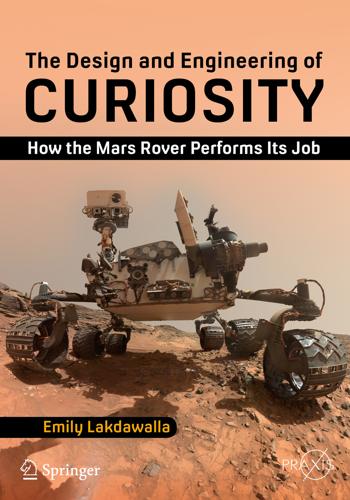
The Design and Engineering of Curiosity: How the Mars Rover Performs Its Job
by
Emily Lakdawalla
Published 5 Mar 2018
The second was that schedule pressure and development problems likely meant that the mission would need a budget increase of about $75 million. 1.5.5 Stern descopes The mission requested more money at an unfortunate time. There was a new Associate Administrator of the Science Mission Directorate at NASA: Alan Stern, a planetary astronomer and aerospace engineer best known for being the principal investigator of the New Horizons mission to Pluto and the Kuiper Belt. Stern had already publicly expressed frustration with cost overruns on some NASA missions harming others. In a period of 5 years, he noted, a total of $5 billion worth of cost overruns had diverted funds from research programs and caused opportunities for other missions to be lost. Also, Stern shared with other members of the science community a concern that NASA was focusing too much of its limited resources on Mars, to the detriment of all the other compelling destinations in the solar system.

More Everything Forever: AI Overlords, Space Empires, and Silicon Valley's Crusade to Control the Fate of Humanity
by
Adam Becker
Published 14 Jun 2025
But anyone taking a lakeside stroll on Titan would need to bring their own oxygen, and they’d need to bundle up. The maximum temperature beneath the impenetrable orange haze of Titan’s skies is around -180°C (-292°F). The lakes are made of hydrocarbons; water ice on Titan has the consistency of granite. Yet even that is far better than the worlds that wait beyond Neptune. On Kuiper Belt objects like Pluto, the ground is made of frozen air. These diminutive worlds, with surface gravity less than 10 percent of Earth’s, slowly amble about the Sun a few times each millennium. Radio signals sent from Earth take hours to arrive. This is not meant to be an exhaustive list of the problems with all the worlds of our solar system.

The Long Way to a Small, Angry Planet (Wayfarers)
by
Becky Chambers
Published 4 Jul 2016
He’d do it again and again, until it felt the way it had before. “Excuse me, Corbin,” Lovey said through the vox. “Yes?” The AI paused. “There’s a sib call coming through for you. It’s from Tartarus.” Corbin looked up from the algae and said nothing. Tartarus. A prison asteroid, out in the Kuiper Belt. There was only one person who would be calling him from there. Lovey spoke again, her voice awkward. “I can dismiss the call if you like.” “No,” Corbin said. He wiped the smear of green slime from the end of his sampling tool and set it aside. “Put it through down here.” “Okay, Corbin. I hope it goes well.”
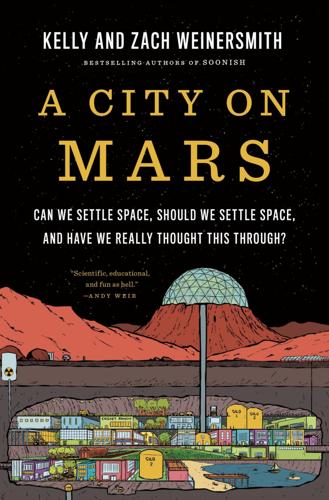
A City on Mars: Can We Settle Space, Should We Settle Space, and Have We Really Thought This Through?
by
Kelly Weinersmith
and
Zach Weinersmith
Published 6 Nov 2023
In Human Governance Beyond Earth: Implications for Freedom, edited by Charles S. Cockell, 173–96. Space and Society. Cham, Switzerland: Springer International Publishing, 2015. https://doi.org/10.1007/978-3-319-18063-2_12. Pitjeva, E. V., and N. P. Pitjev. “Masses of the Main Asteroid Belt and the Kuiper Belt from the Motions of Planets and Spacecraft.” Astronomy Letters 44 (2018): 554–66. https://doi.org/10.1134/S1063773718090050. Pizza Hut. “Hut Life—Official Pizza Hut Blog.” 2022. http://blog.pizzahut.com/. Pletser, Vladimir. On to Mars! Chronicles of Martian Simulations. Singapore: Springer, 2018.

Year's Best SF 15
by
David G. Hartwell; Kathryn Cramer
Published 15 Aug 2010
The Aleutians, the only aliens humanity had yet encountered, had never been very good at explaining themselves. Nobody would have been allowed to keep the Buonarotti on a desktop on Earth, anyway. The voters were afraid an Instantaneous Transit Collider might rend the fabric of reality and wanted it as far away as possible. So the aliens had created the Torus, and set it afloat out here in the Kuiper Belt as a kind of goodbye present—when they’d tired of plundering planet Earth, and gone back from whence they came. Wherever that was. But the Aleutians had departed before Malin was born. The problem right now was the new, Traditionalist government of the World State. A fact-finding mission was soon to arrive at the Panhandle station, and the Torus scientists were scared.

Leviathan Wakes
by
James S. A. Corey
Published 14 Jun 2011
The moon itself—Phoebe—filled the frame, turning slowly to show all sides like a prostitute at a cheap brothel. It was a crater-marked lump, indistinguishable from a thousand other asteroids and planetesimals Miller had seen. “Given Phoebe’s extra-ecliptical orbit,” the sociopath went on, “one theory has been that it was a body that originated in the Kuiper belt and had been captured by Saturn when it happened to pass through the solar system. The existence of complex silicon structures within the interior ice, along with suggestions of impact-resistant structures within the architecture of the body itself, have forced us to reevaluate this. “Using analyses proprietary to Protogen and not yet shared with the Martian team, we have determined beyond any credible doubt that what you are seeing now is not a naturally formed planetesimal, but a weapon.
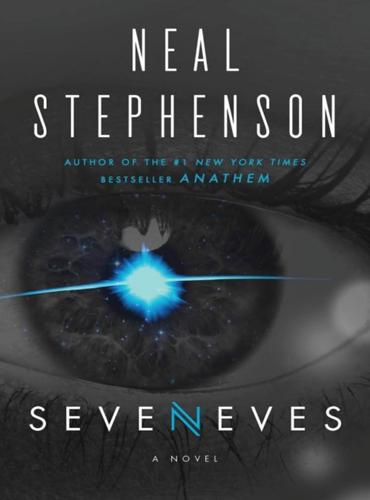
Seveneves
by
Neal Stephenson
Published 19 May 2015
Which was what Kath Two ought to be doing. They represented a civilization that had, during the Fourth Millennium, executed a plan to undo the damage caused by the Agent by identifying, cataloging, reaching, corralling, and revectoring millions of rocks in orbit around Earth, while also reaching as far as the Kuiper Belt to acquire chunks of frozen water and methane and ammonia and bring them home and smash them into the ruined planet. Essentially all of this work had been accomplished by robots. So much metal had gone into their construction that millions of humans now lived in space habitats whose steel hulls consisted entirely of melted down and reforged robot carcasses.